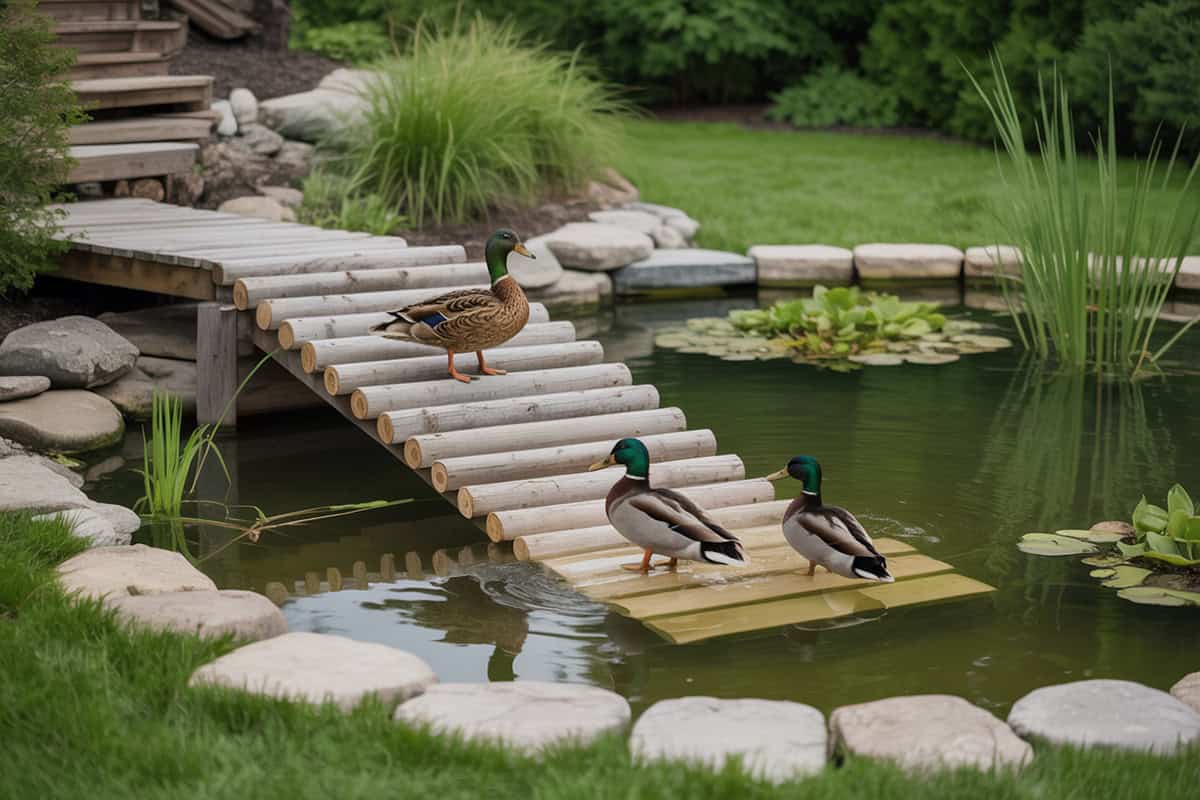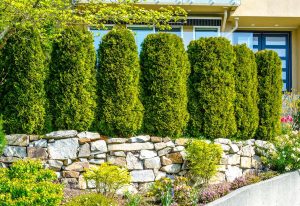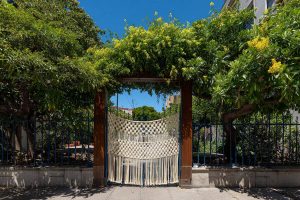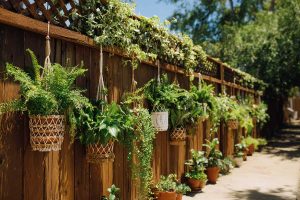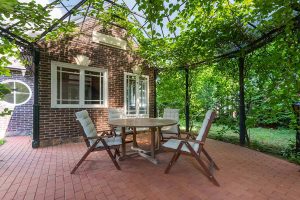Ducks deserve more than a simple water dish. A well-designed pond keeps them healthy and entertained while boosting your yard’s charm. Check out these 30 backyard duck pond ideas for every space and style.
Table of Contents
- Backyard Duck Pond Ideas
- Natural-Looking Pond with Log Ramp
- Raised Rubber Liner Pond with Wood Frame
- Duck Pond with Waterfall Feature
- Deck-Side Pond for Up-Close Viewing
- Recycled Bathtub Duck Pond
- Duck Pond with Floating Plant Islands
- Solar-Powered Pond with Aerator
- Cobblestone-Edged Pond
- Duck Pond with Wooden Footbridge
- Pond with Sloped Beach Entry
- Duck Pond in a Half Wine Barrel
- Vegetable Garden Border Pond
- Sunken Tire Duck Pond
- Zen-Inspired Pond with Bamboo Fence
- Duck Pond with Center Island
- Corner Pond with Reeds and Tall Grass
- Duck Pond with Viewing Bench
- Stepping-Stone Path Around the Pond
- Brick-Lined Oval Pond
- Duck Pond with Rainwater Collection
- Pond with Integrated Duck House Platform
- Kid-Friendly Duck Pond with Fence
- Modern Geometric Pond Design
- Duck Pond with Solar String Lights
- Rustic Rock Wall Pond
- Reflective Pond with Minimal Plants
- Duck Pond with Flowering Marginal Plants
- Duck Pond with Stream Channel
- Natural Muddy Wallow Section
- Multi-Level Pond with Waterfall Drop
Backyard Duck Pond Ideas
Duck ponds come in all shapes and sizes. It really depends on your space, budget, and how you want to spend time with your ducks.
Natural-Looking Pond with Log Ramp
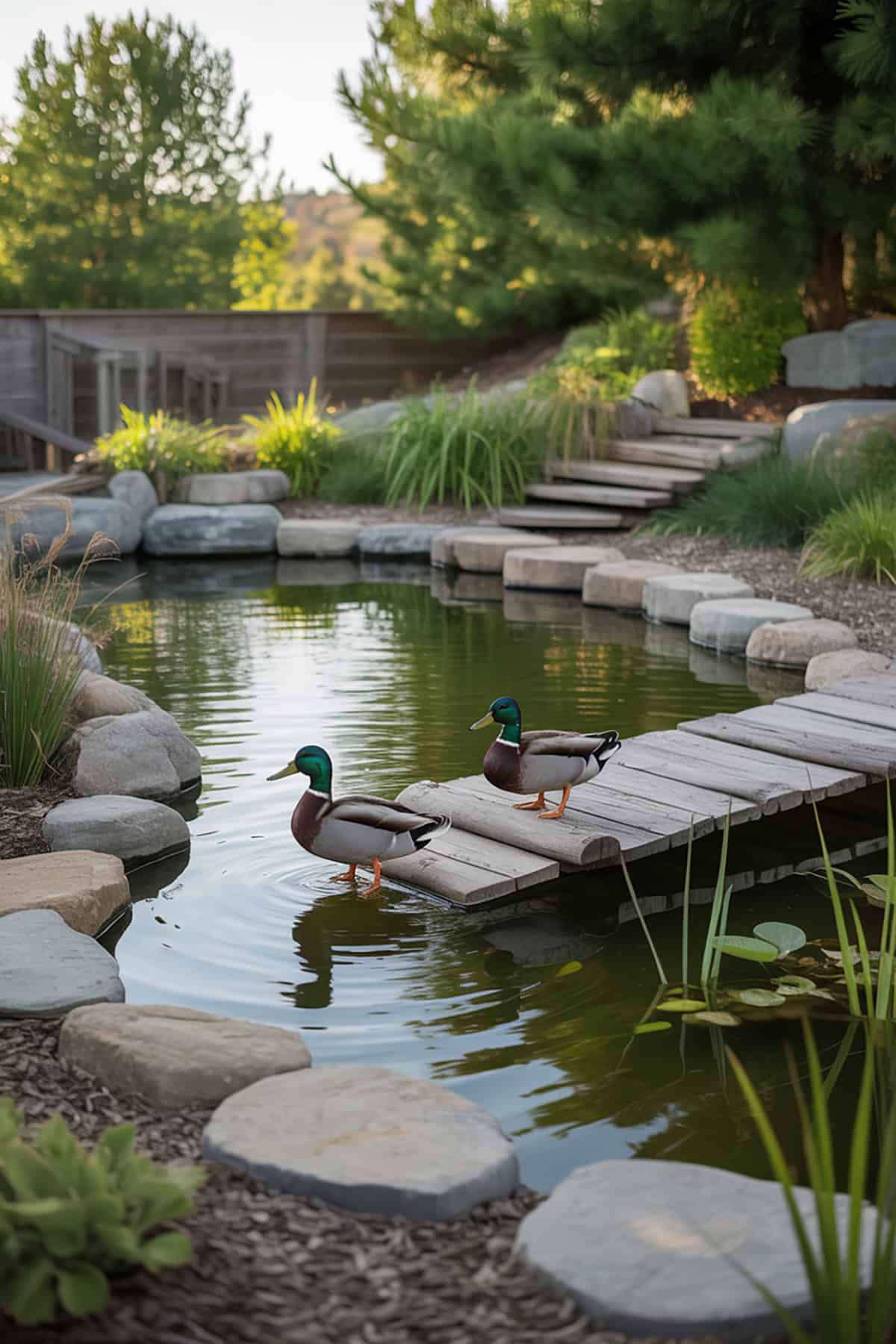
A natural-style duck pond just fits right into your yard’s vibe. Use a flexible pond liner for a shape that isn’t too perfect. Toss in some rocks, plants, and branches for shade and hiding spots.
A log ramp is a must so your ducks can get in and out without any drama. Native aquatic plants help keep the water clean and shady. Plus, frogs, insects, and birds might drop by, which is fun for the ducks and for you.
Raised Rubber Liner Pond with Wood Frame
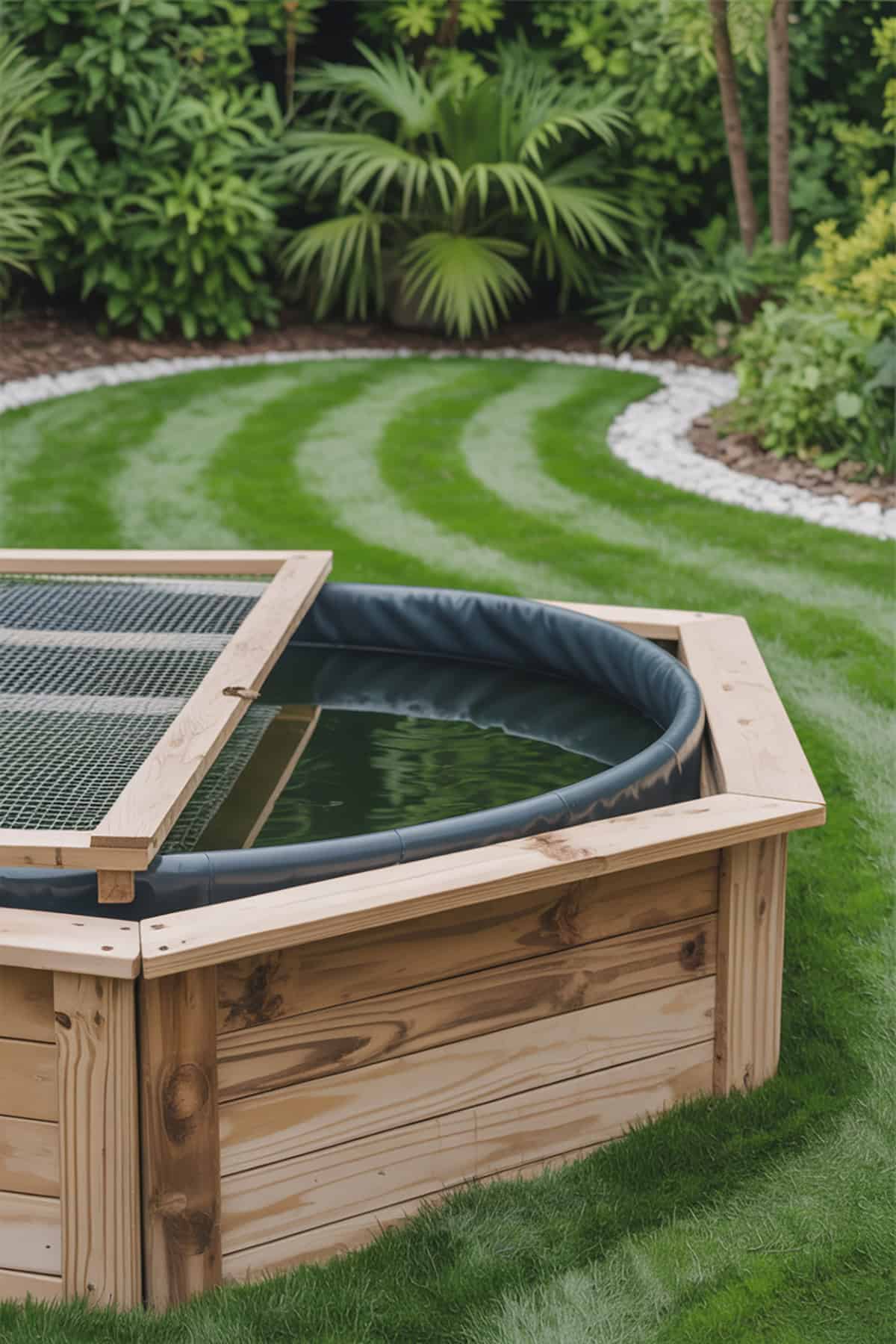
Building a raised duck pond keeps things tidy and easy to handle. The rubber liner holds water, no leaks. A wood frame gives it shape and a nice edge.
Set the frame at about knee height—it’s just easier for cleaning. Add a ramp so the ducks can come and go without hassle. This setup keeps out digging critters. A simple drain valve makes changing water a breeze.
Duck Pond with Waterfall Feature
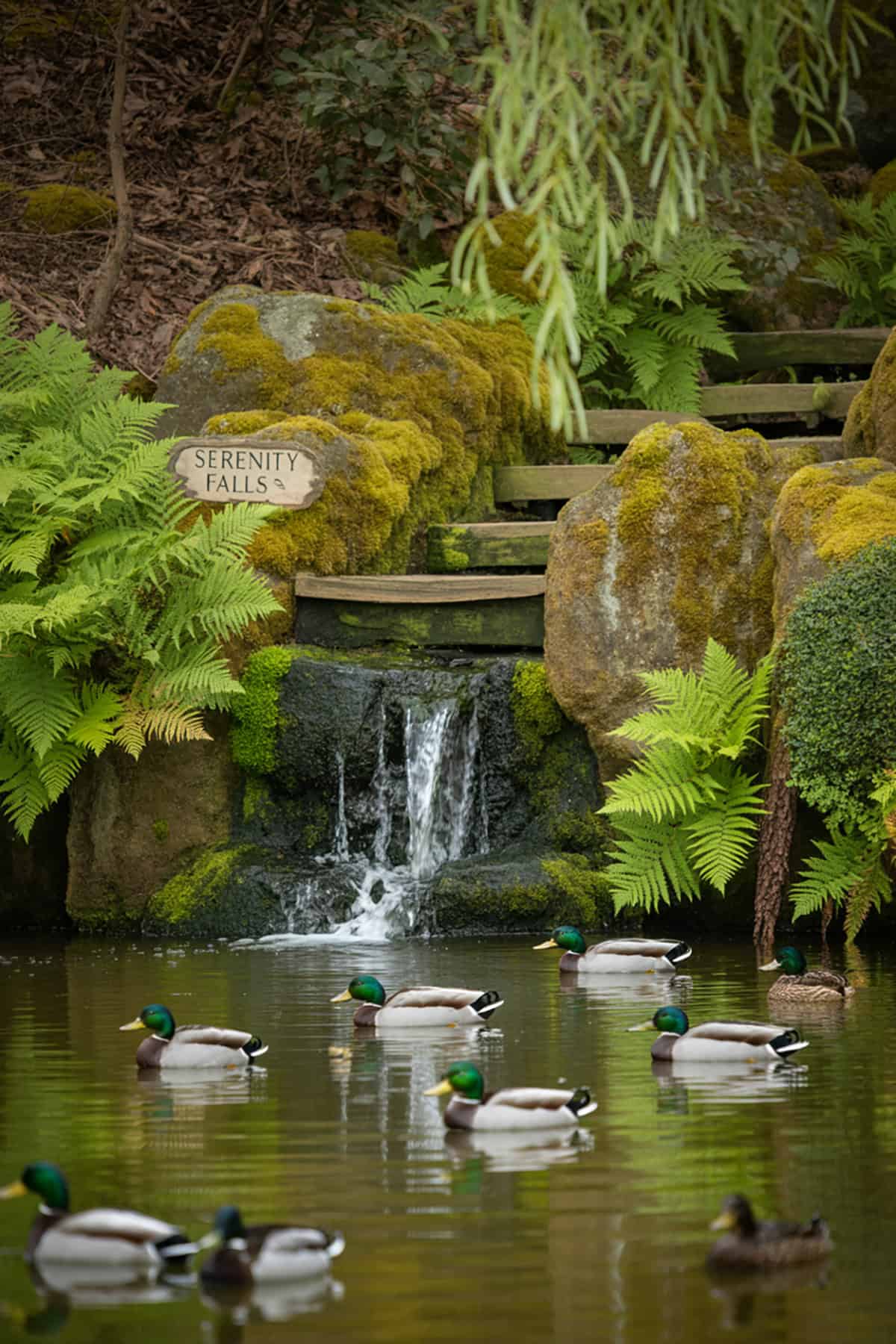
A waterfall brings some life to the pond and keeps the water moving. Running water means less algae and happier ducks. They seem to love splashing around under the falls.
Use a submersible pump for circulation. Stack rocks or grab a pre-made waterfall kit if you’re short on time. Waterfalls need safe electrical work, so don’t cut corners there. Ferns and mosses around the rocks look great and stay green.
Deck-Side Pond for Up-Close Viewing
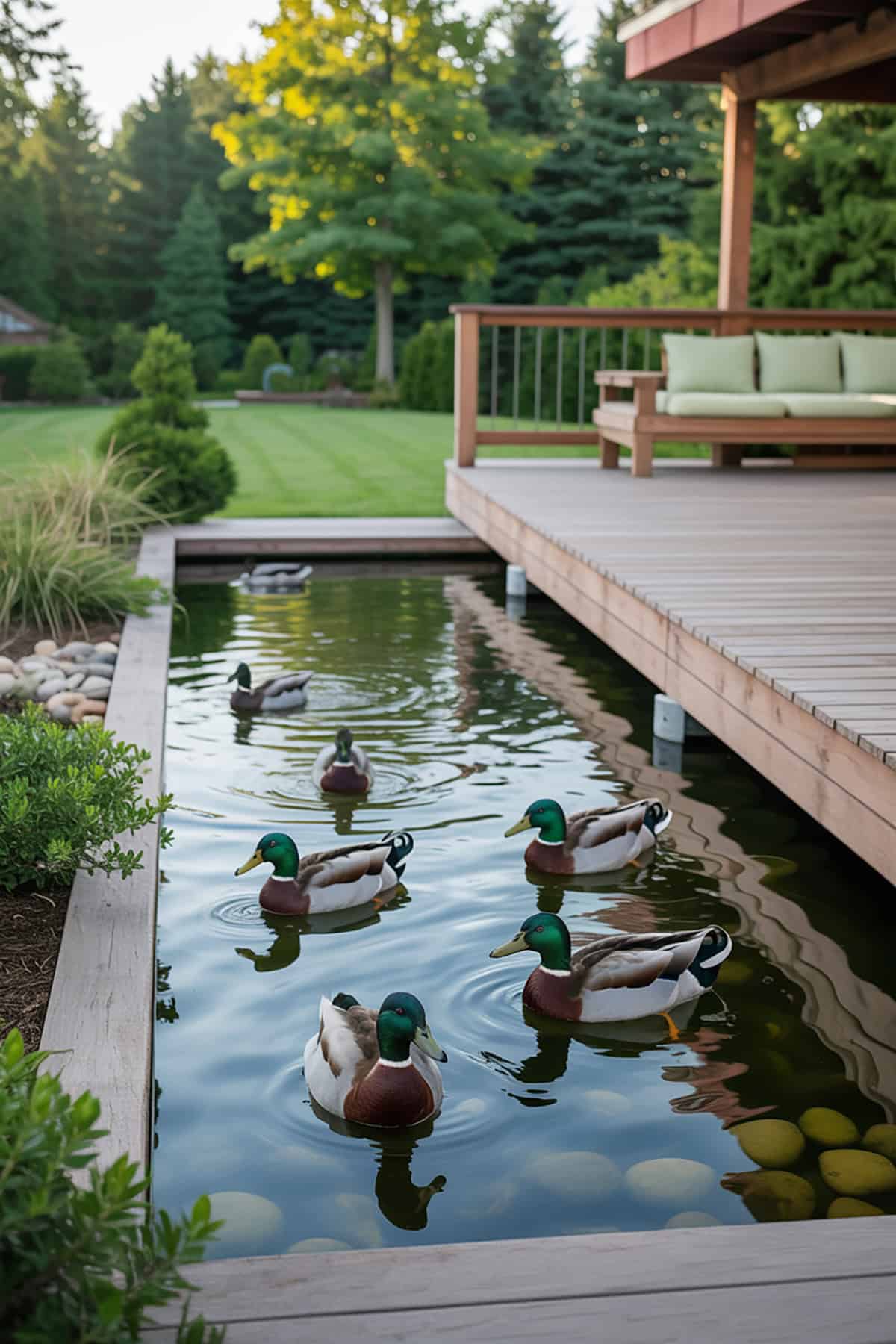
Put your duck pond near the deck or patio if you want a front-row seat. Watching the ducks while you’re outside is honestly pretty relaxing. Ducks get curious and swim closer when people are around.
Pond liners keep things watertight. Make a shallow end for preening and play. Timber edging or pavers help keep everything in place. Cleaning and feeding are easier when you don’t have to trek across the yard.
Recycled Bathtub Duck Pond

A recycled bathtub is a quick, budget-friendly pond option. Bathtubs are already watertight and sturdy, and the drain makes cleaning simple.
You can bury it or leave it above ground if the yard’s small. Add a ramp or little ladder for duck access. Dress it up with some paint or plants. Best for a couple of ducks, not a huge flock.
Duck Pond with Floating Plant Islands
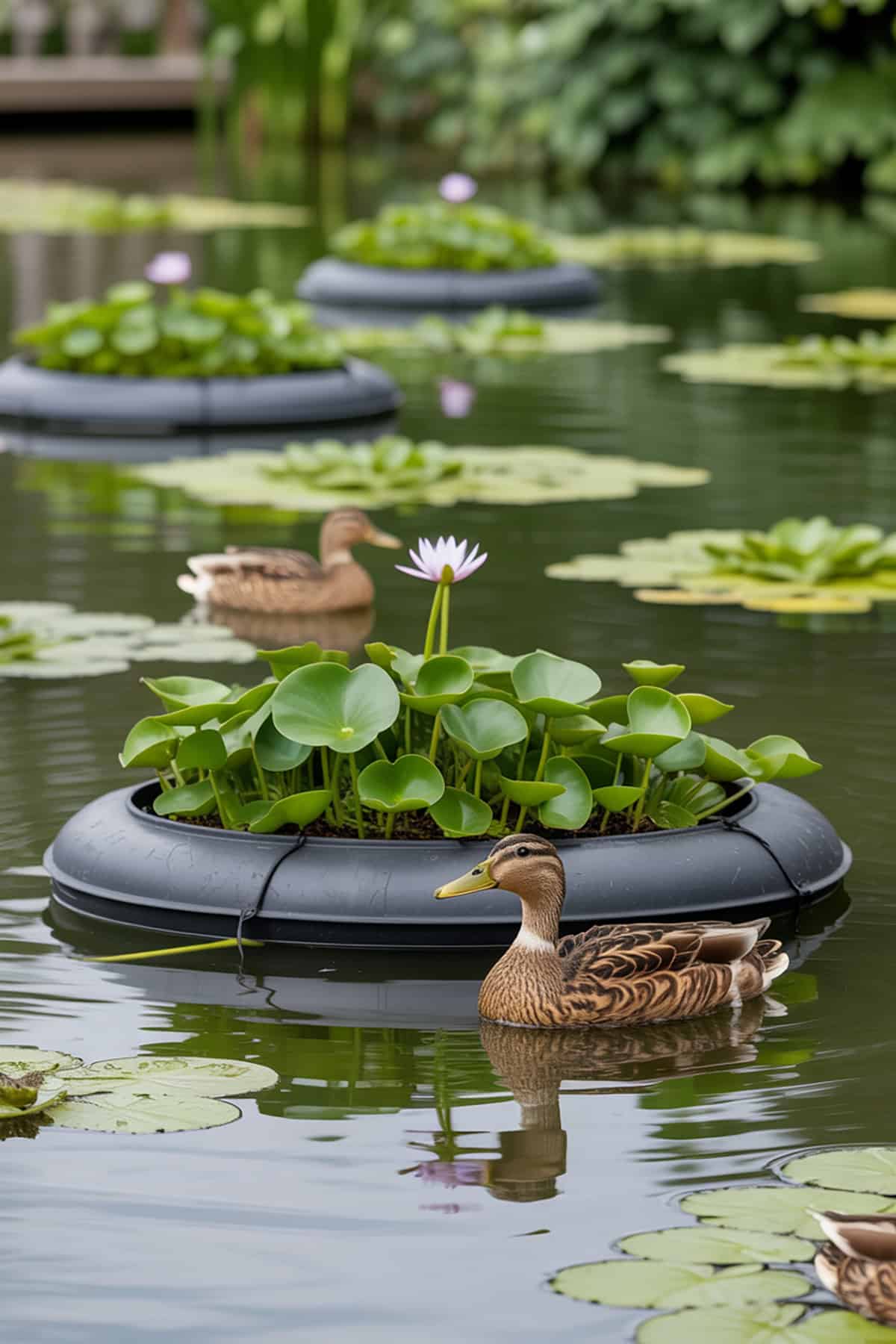
Floating plant islands help keep the water clear and give ducks something to explore. Ducks can’t yank these plants out as easily. The roots dangle in the water, filtering and providing shade for fish and tadpoles.
Use pond-safe foam, mesh, or recycled plastic for the floats. Native floaters like water hyacinth and duckweed work well. Move the islands around to change things up or control sun exposure. It’s a nice touch that actually works.
Solar-Powered Pond with Aerator
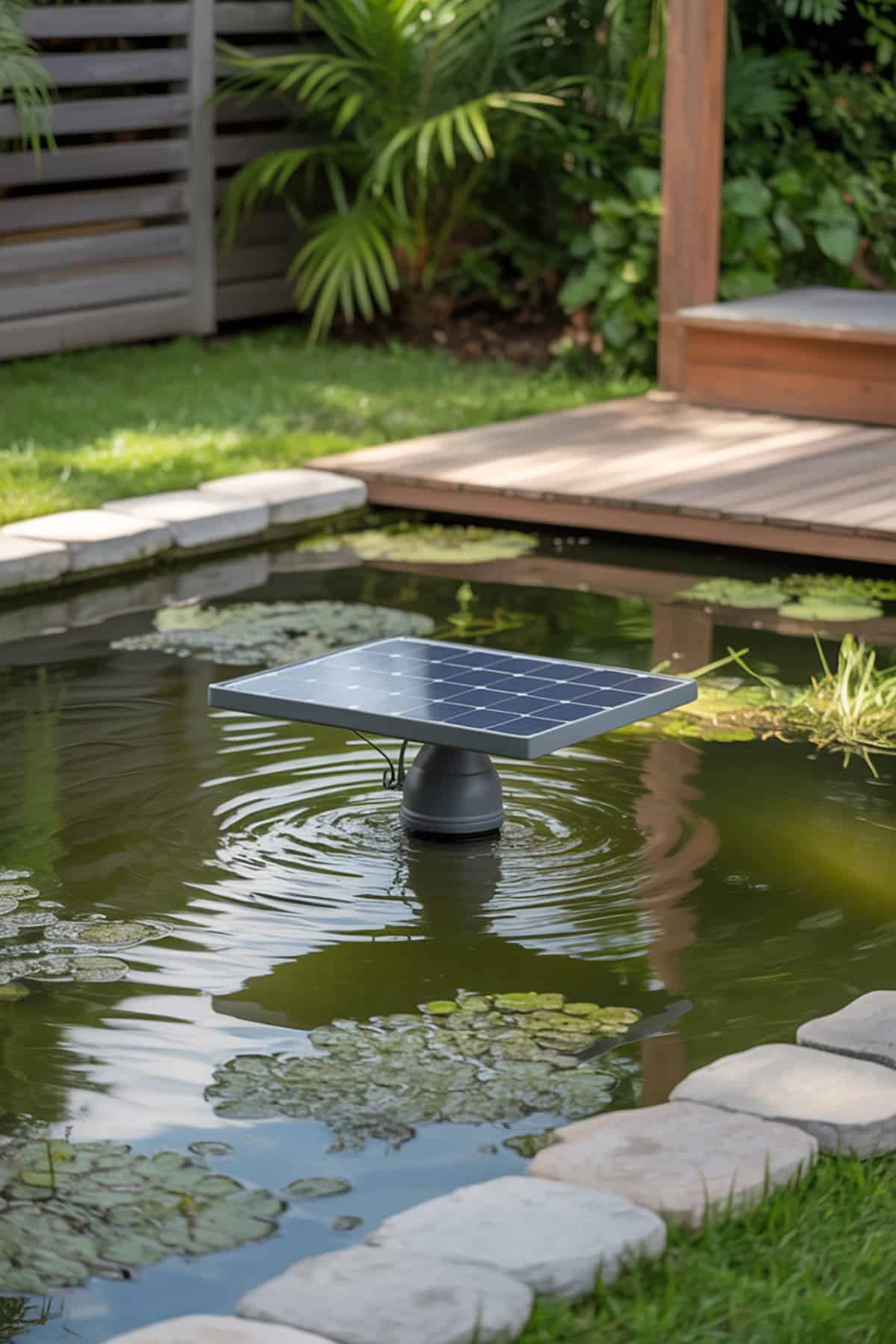
Solar-powered aerators keep the pond water fresh and oxygenated. It stops things from getting too stagnant and helps the whole ecosystem. No need for electrical cords running through the yard.
Pick a solar aerator that’s the right size for your pond. Make sure the panels get full sun. Aerated water stays cleaner and helps keep mosquitoes in check. Ducks seem to enjoy the bubbles, too.
Cobblestone-Edged Pond
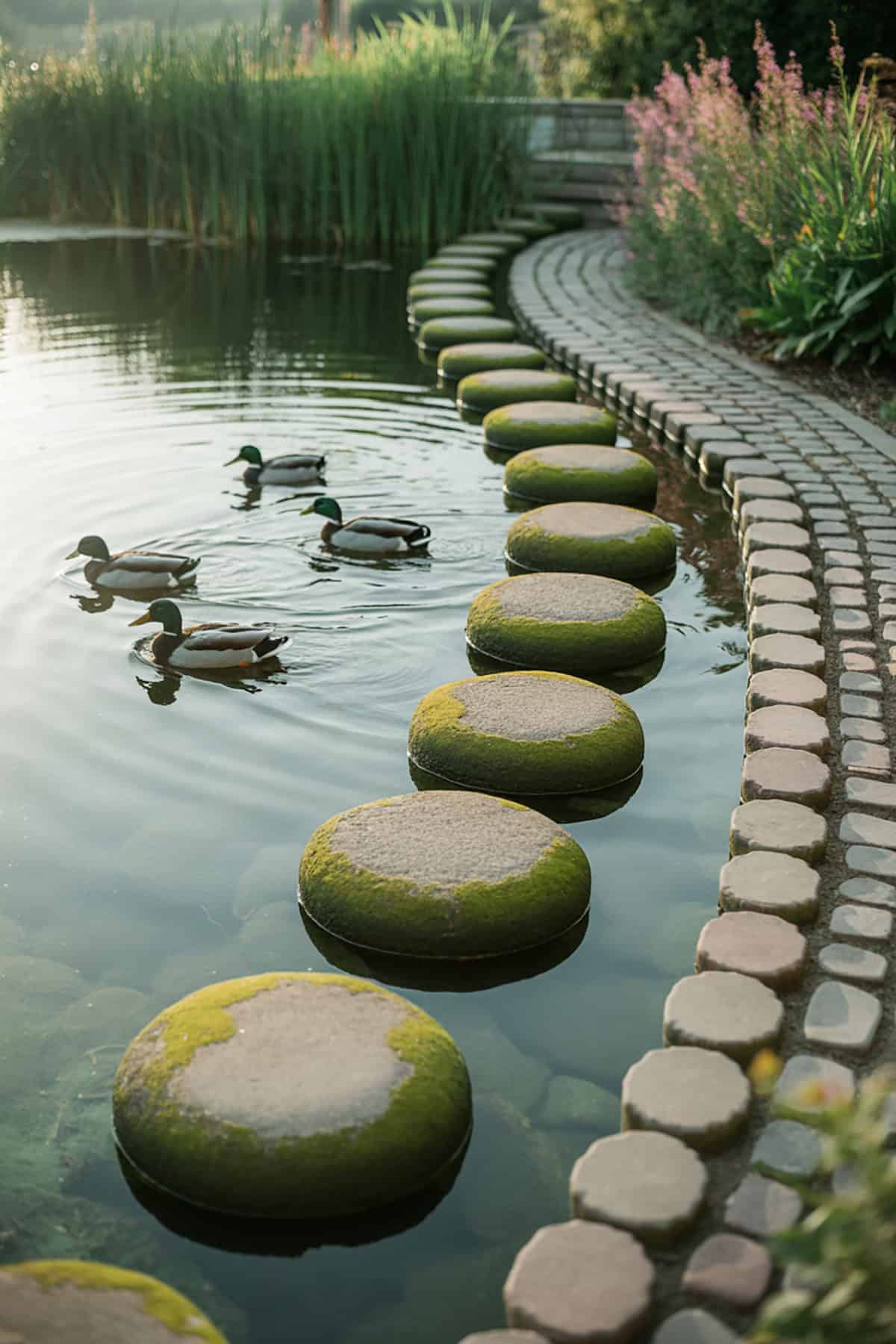
Cobblestone edges give your pond a classic, natural look. Stones stay put and handle weather well. Rounded edges are comfy spots for ducks to hang out and preen.
Use flat stones to make a lip at or just above the water. Gravel underneath helps drainage. Fill gaps with soil or moss for a softer look. This edging works with both wild and more polished gardens.
Duck Pond with Wooden Footbridge
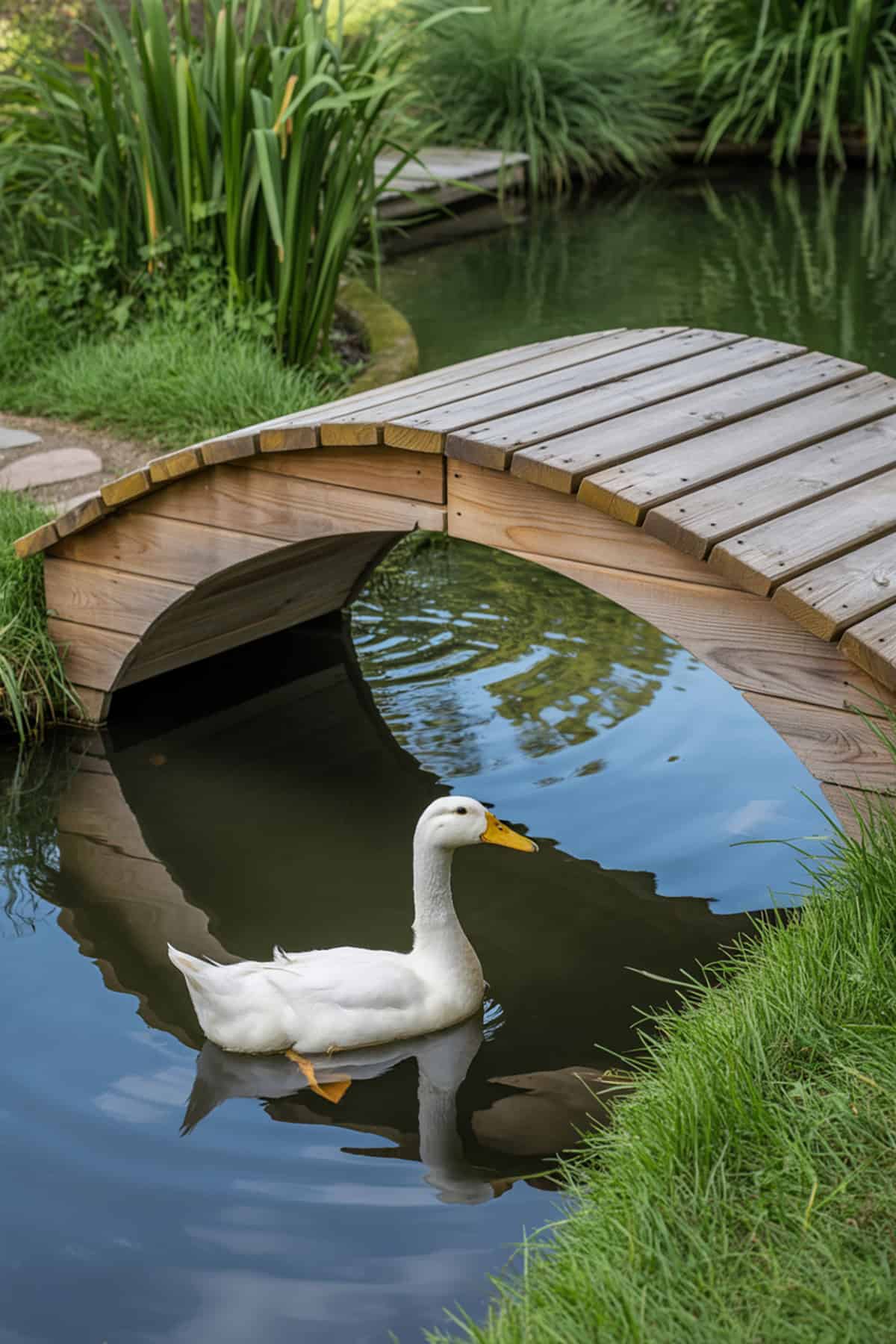
A wooden footbridge adds a little charm and gives you a better view. Put it over the middle or across one end—arched or flat, either works.
Make sure it’s wide and sturdy enough, and seal the wood against the weather. Ducks like the shade under bridges, especially when it’s hot out.
Pond with Sloped Beach Entry
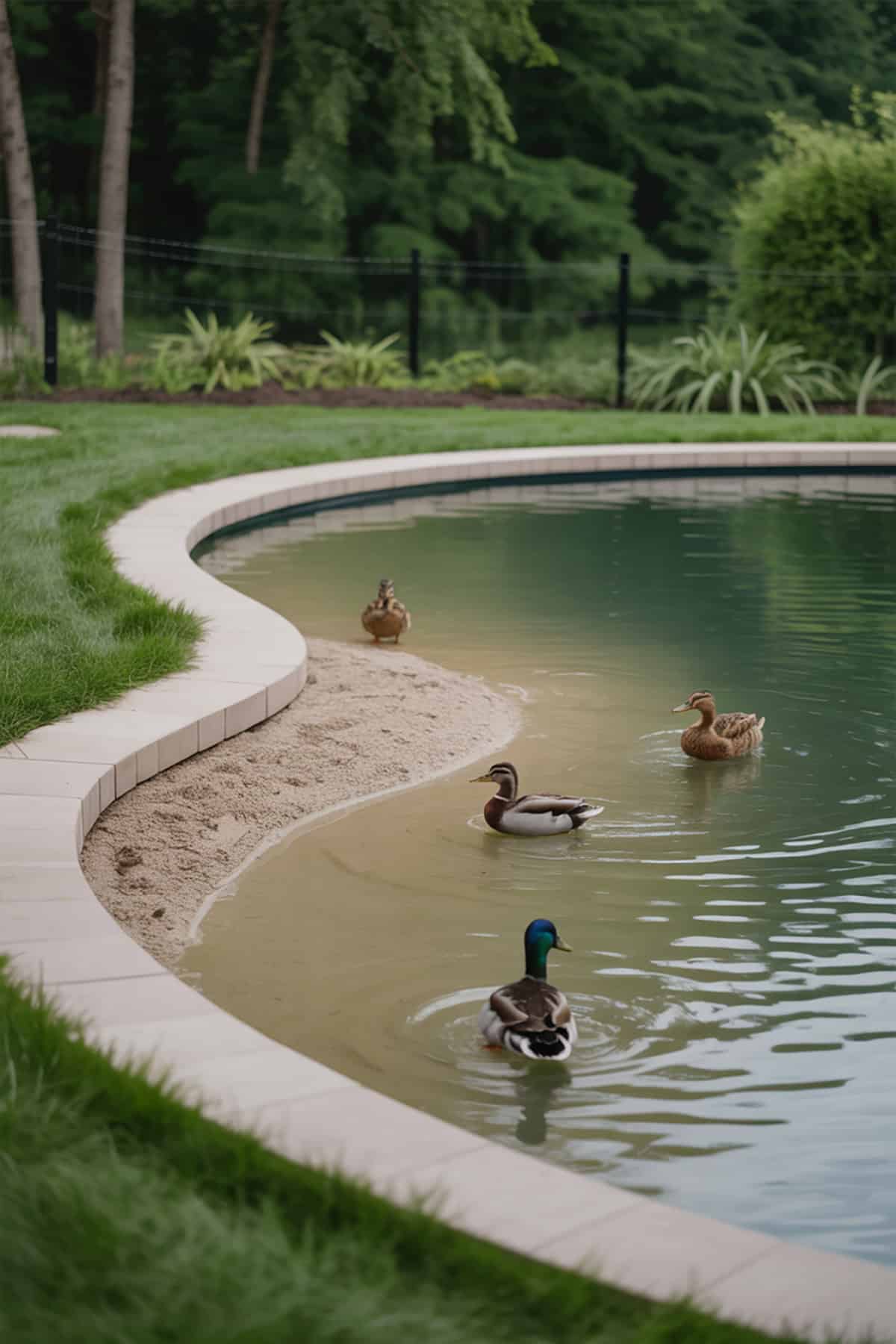
A sloped beach entry makes the pond accessible for ducks of all ages. Ducklings can learn to swim safely, and grown ducks just waddle right in.
Build up the slope with sand or small gravel, keeping it gradual. The beach area is perfect for dabbling and drying off. Clean sand is gentle on their feet.
Duck Pond in a Half Wine Barrel
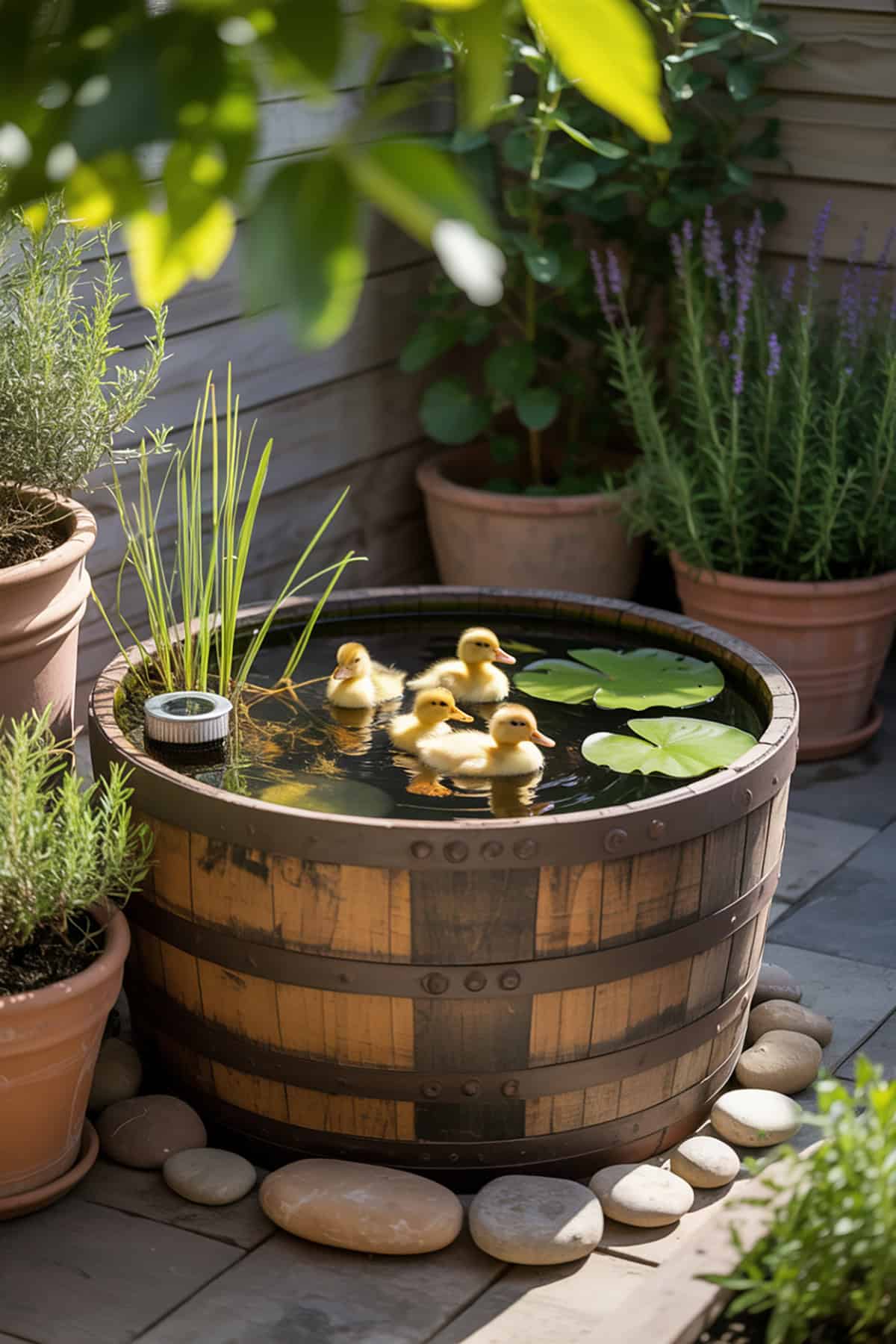
A half wine barrel pond is great for small spaces and looks pretty neat. The wood is sturdy and gives a rustic vibe. Use a liner to keep leaks at bay and protect the barrel.
Keep it shallow for easy duck access. Cut a notch for a ramp, and plant around the base to blend it in. Works best for just one or two small ducks.
Vegetable Garden Border Pond
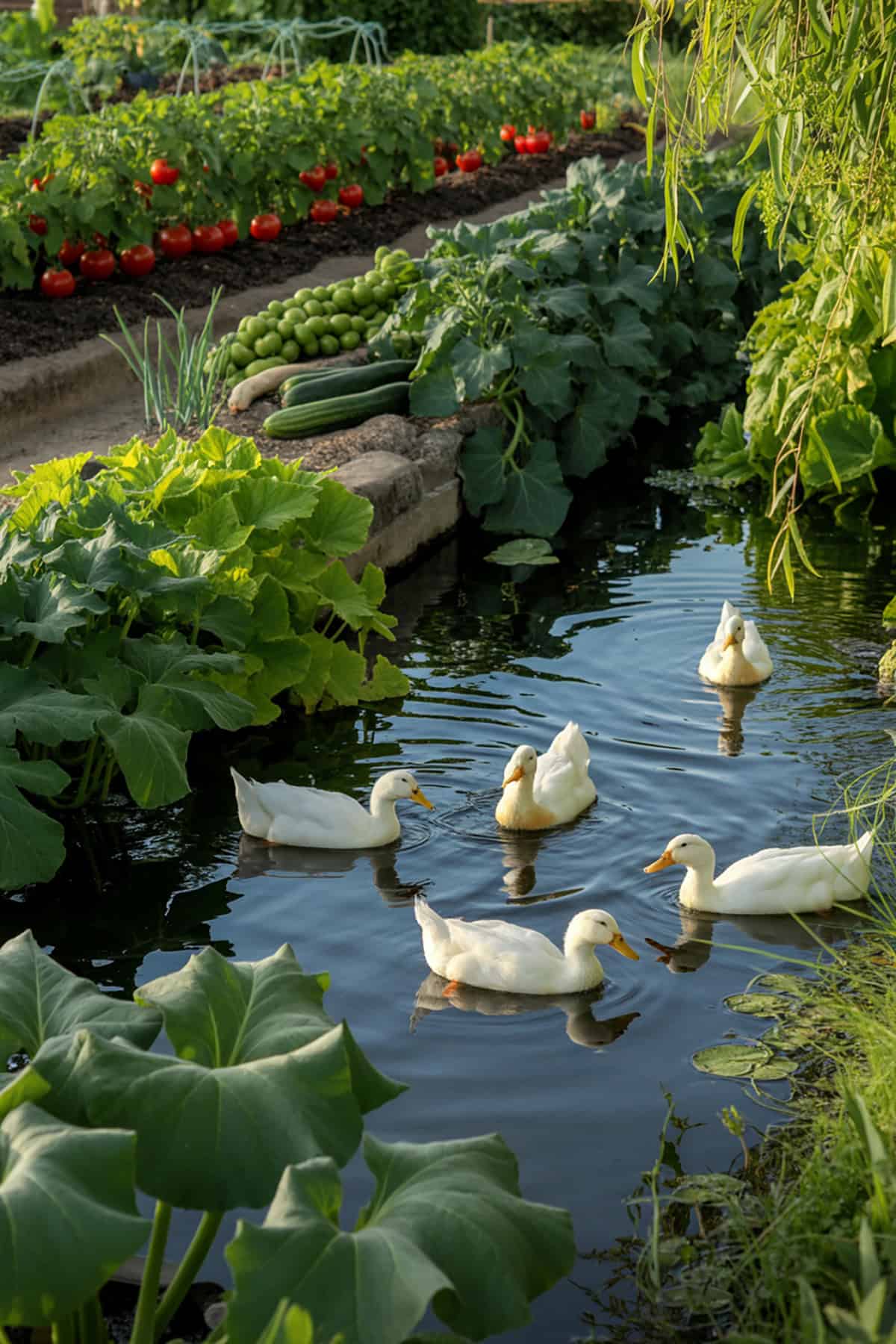
Putting a duck pond along your veggie garden border is a win-win. Ducks help with pest control, and the nutrient-rich pond water can fertilize your plants.
Lay the pond parallel to the garden beds and use edging to keep dirt out. Add a wide ramp for duck access. Shade plants nearby help keep the water cool. It’s a practical use of space.
Sunken Tire Duck Pond
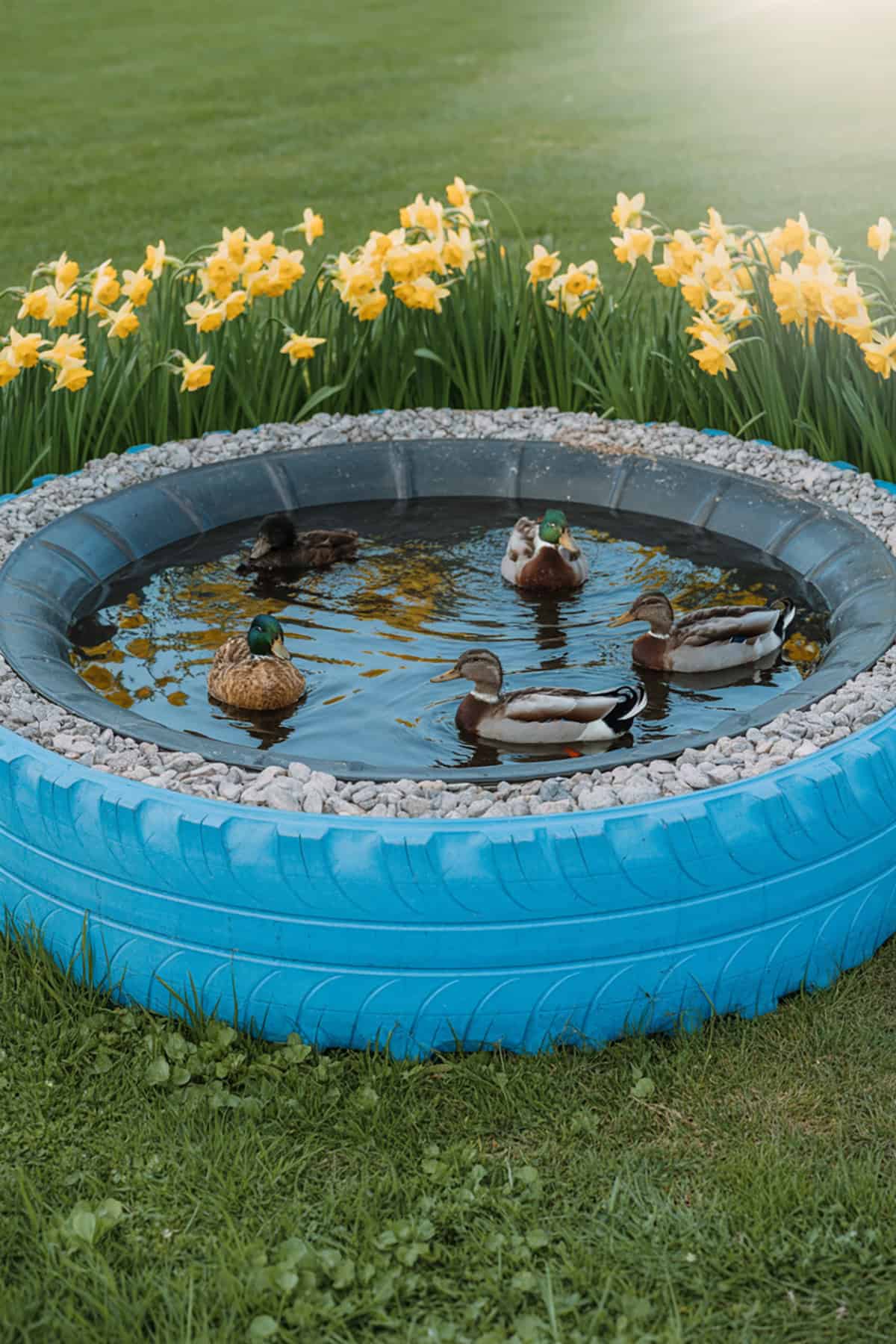
Sunken tire ponds use recycled materials and fit into tight spots. Big tractor or truck tires hold enough water for a few ducks. Cut off the sidewalls and line the inside with pond liner for a smooth finish.
The ground-level design makes it easy for ducks to hop in and out. Cover the tire edge with rocks, sand, or wood chips to dress it up. Use several tires in a row if you want a bigger pond.
Zen-Inspired Pond with Bamboo Fence
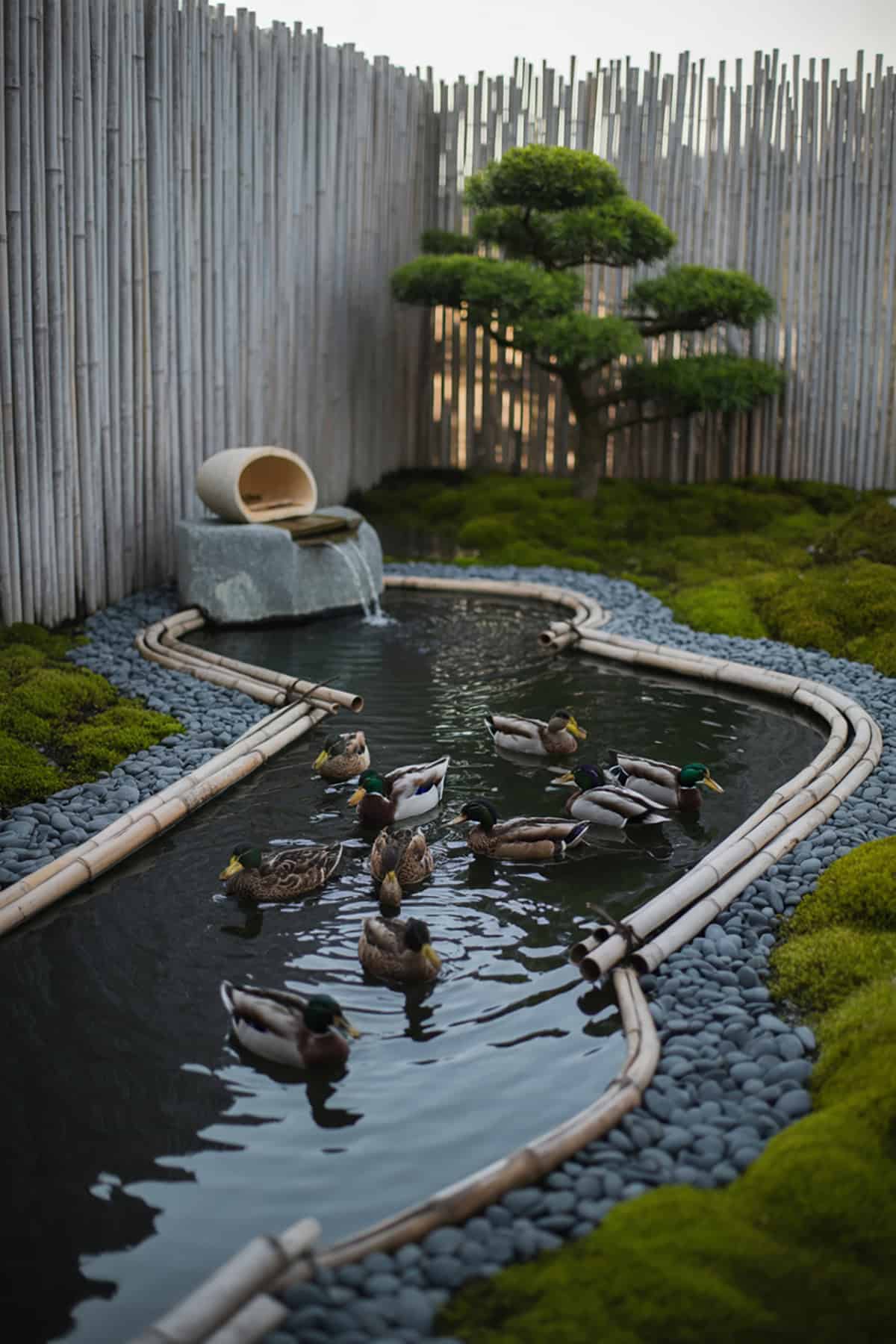
Zen-inspired ponds are all about simplicity and calm. Bamboo fencing adds privacy and a peaceful touch. River stones around the pond finish the look.
Keep the design low-key and don’t overdo it with plants. A bamboo dipper or tiny fountain adds gentle movement. Trim everything for clean lines. Works nicely in small yards or city gardens.
Duck Pond with Center Island
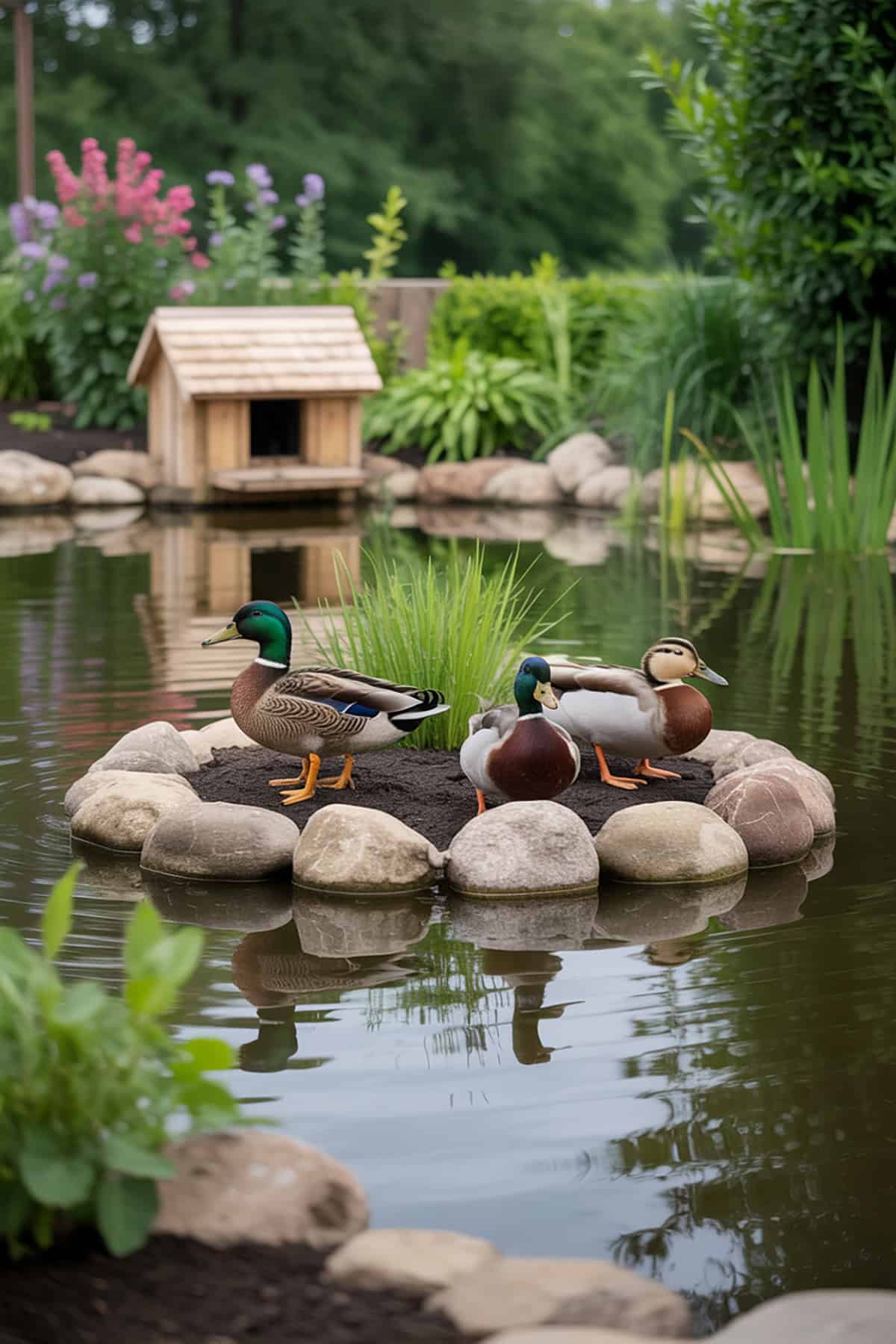
A pond with a center island gives ducks a private spot to chill. Build it with big rocks or a mesh frame topped with sand and soil. Add some low plants or grass.
The island helps ducks feel safe, away from the shore. Make it big enough for several ducks at once. Ramps or stepping stones help them get there without trouble.
Corner Pond with Reeds and Tall Grass
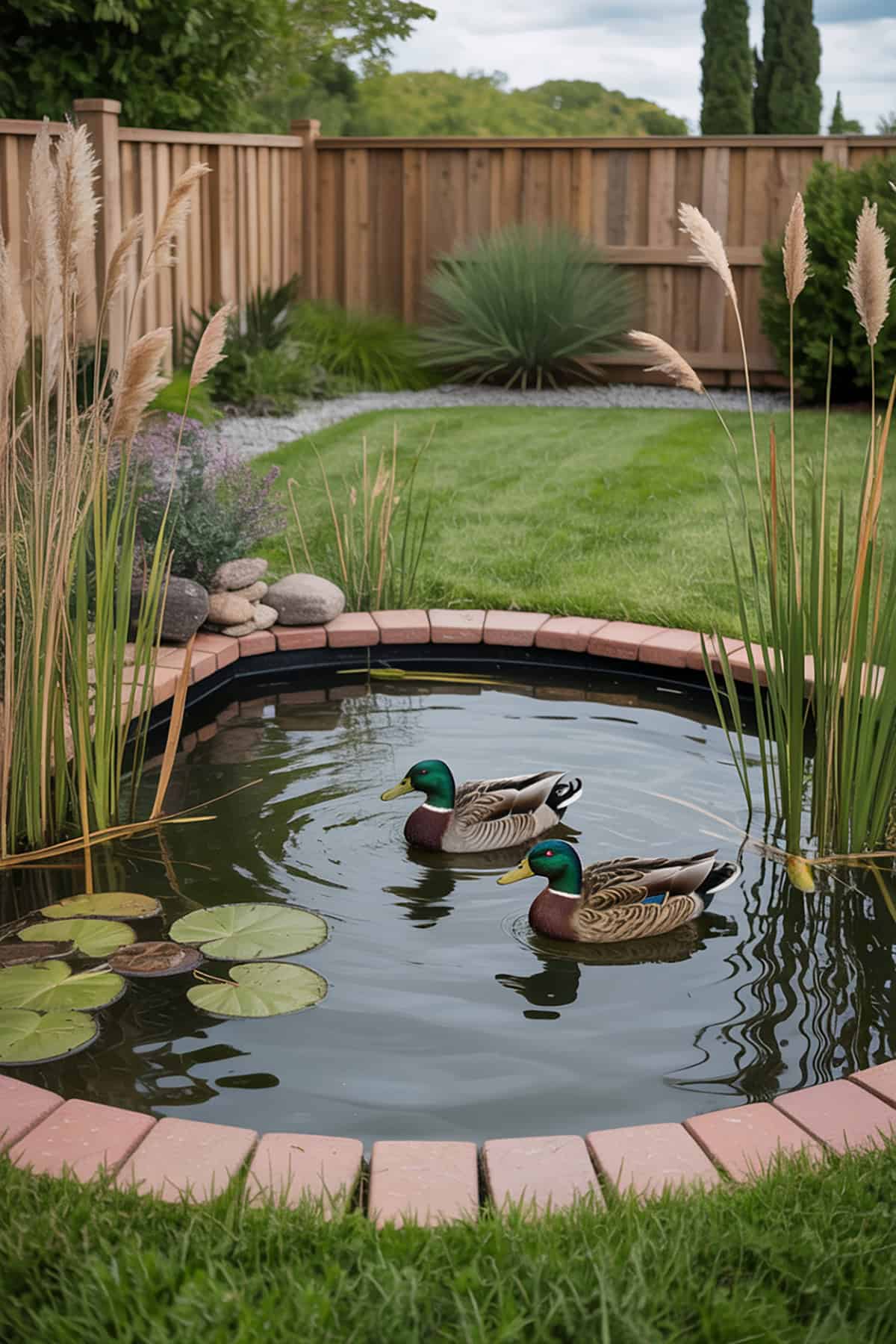
A corner pond uses up that awkward space where fences meet. Shape the pond to fit snugly, and plant native reeds and tall grasses along the back for privacy and a windbreak.
These plants give shelter and attract birds and insects. Use shorter plants at the front so you still get a good view. Mimics a wetland and gives ducks plenty to do.
Duck Pond with Viewing Bench
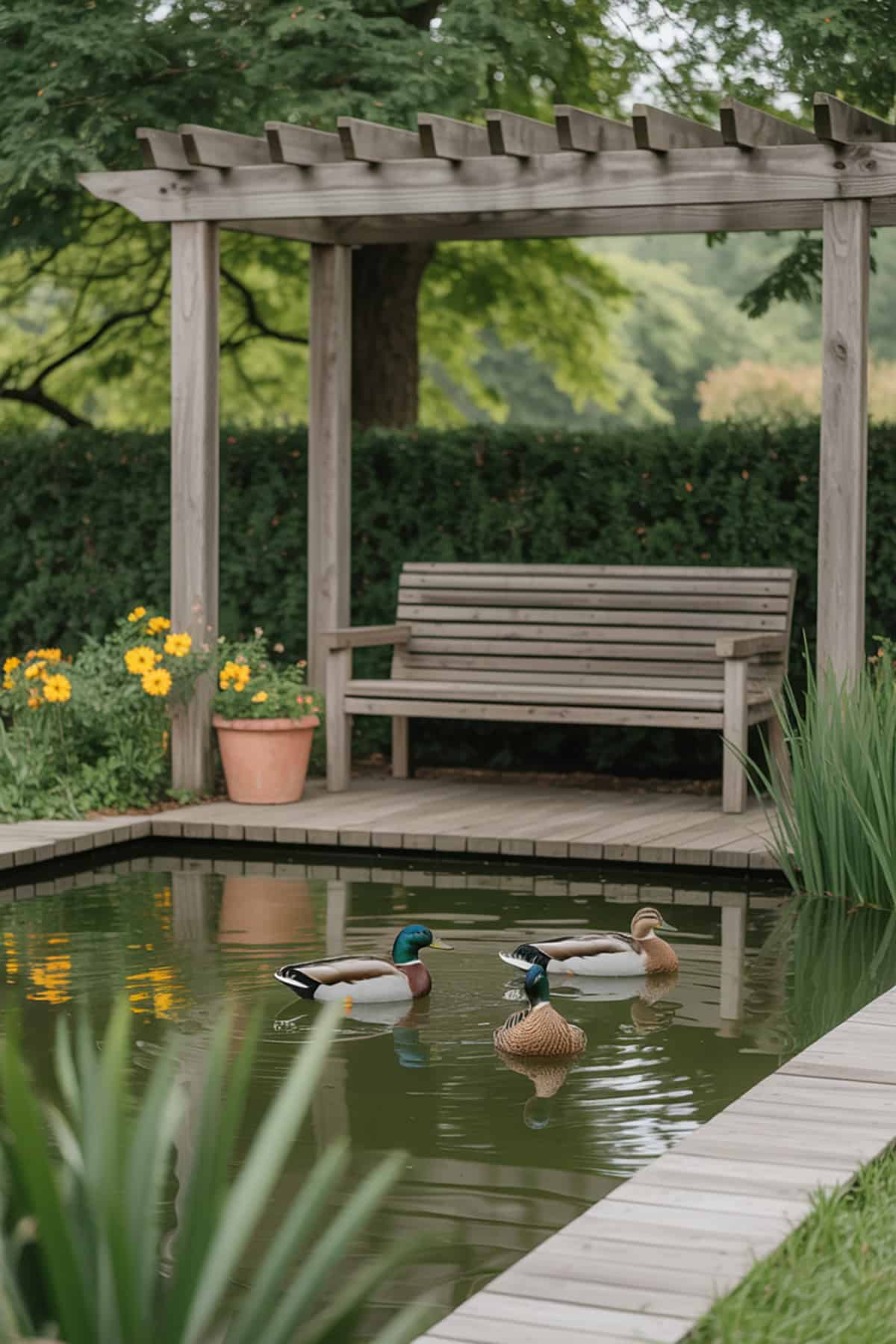
A bench by your duck pond is a quiet spot to relax and watch the flock. Use weatherproof wood, metal, or stone so it lasts. Shade is a big plus for comfort.
Keep the path to the bench clear. Fragrant plants around the bench add to the vibe. Ducks often hang out nearby if there’s a seat, so you’ll get a close-up show.
Stepping-Stone Path Around the Pond
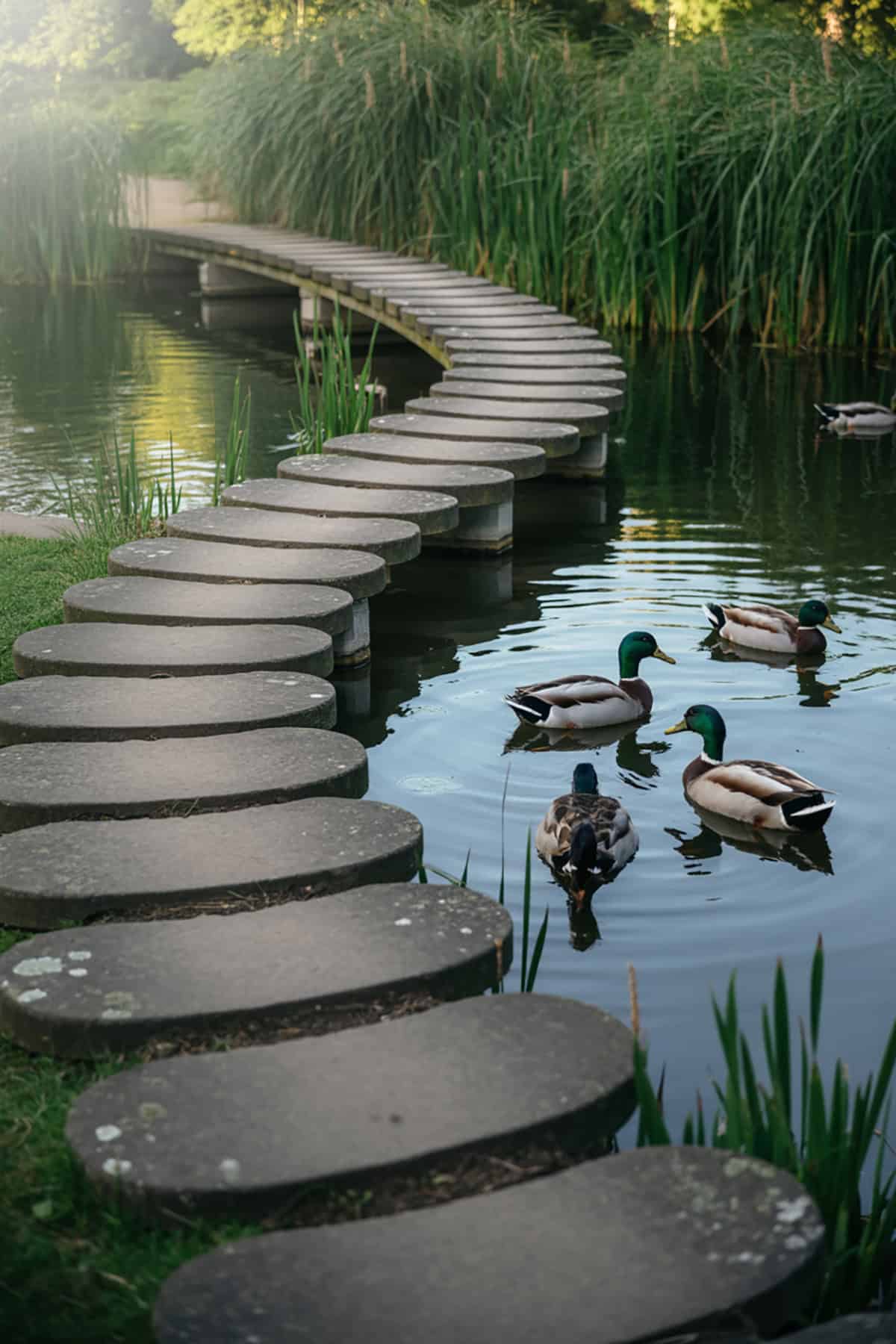
Stepping-stones keep your shoes clean and make it easy to check on the ducks. Flat stones or pre-cast pavers are safest for walking.
Lay them close for stability, and set them on a sand base. Paths help with cleaning, feeding, or snapping photos. Plant grass or moss between stones for a soft finish.
Brick-Lined Oval Pond

Bricks give a neat, formal edge to an oval duck pond. Brick walls last and hold their shape. Use a pond liner inside for waterproofing.
Stagger the brick joints for strength and keep the wall low for duck access. Add flowering plants or grasses at the corners. Brick ponds fit right in with traditional gardens.
Duck Pond with Rainwater Collection
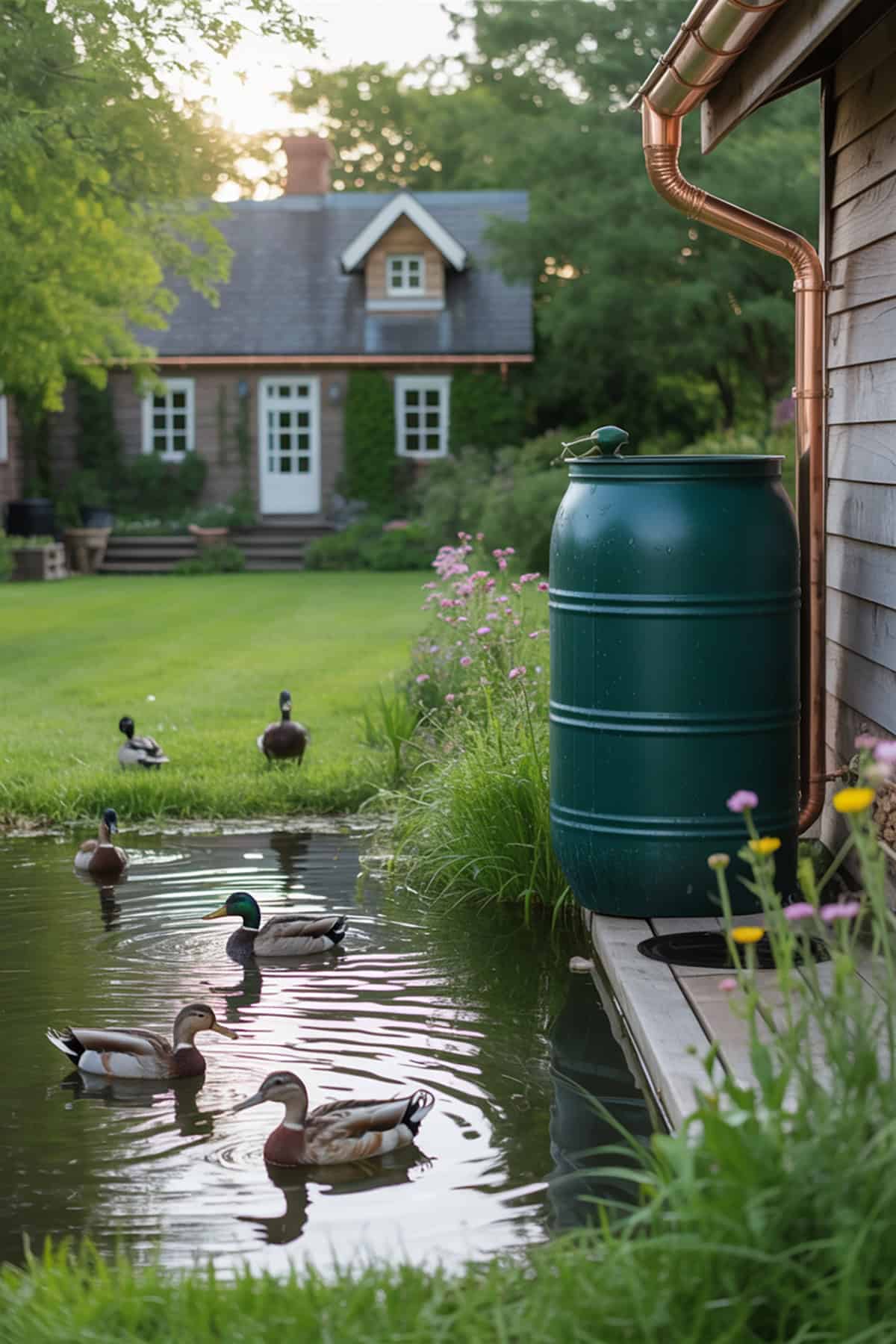
A rainwater-fed pond is good for the budget and the planet. Set up gutters, pipes, and a barrel to collect water for the pond. It cuts down on tap water use.
Add a filter to catch debris before it hits the pond. Overflow channels are a must for heavy rain. Fresh rain helps keep the pond cleaner, too.
Pond with Integrated Duck House Platform
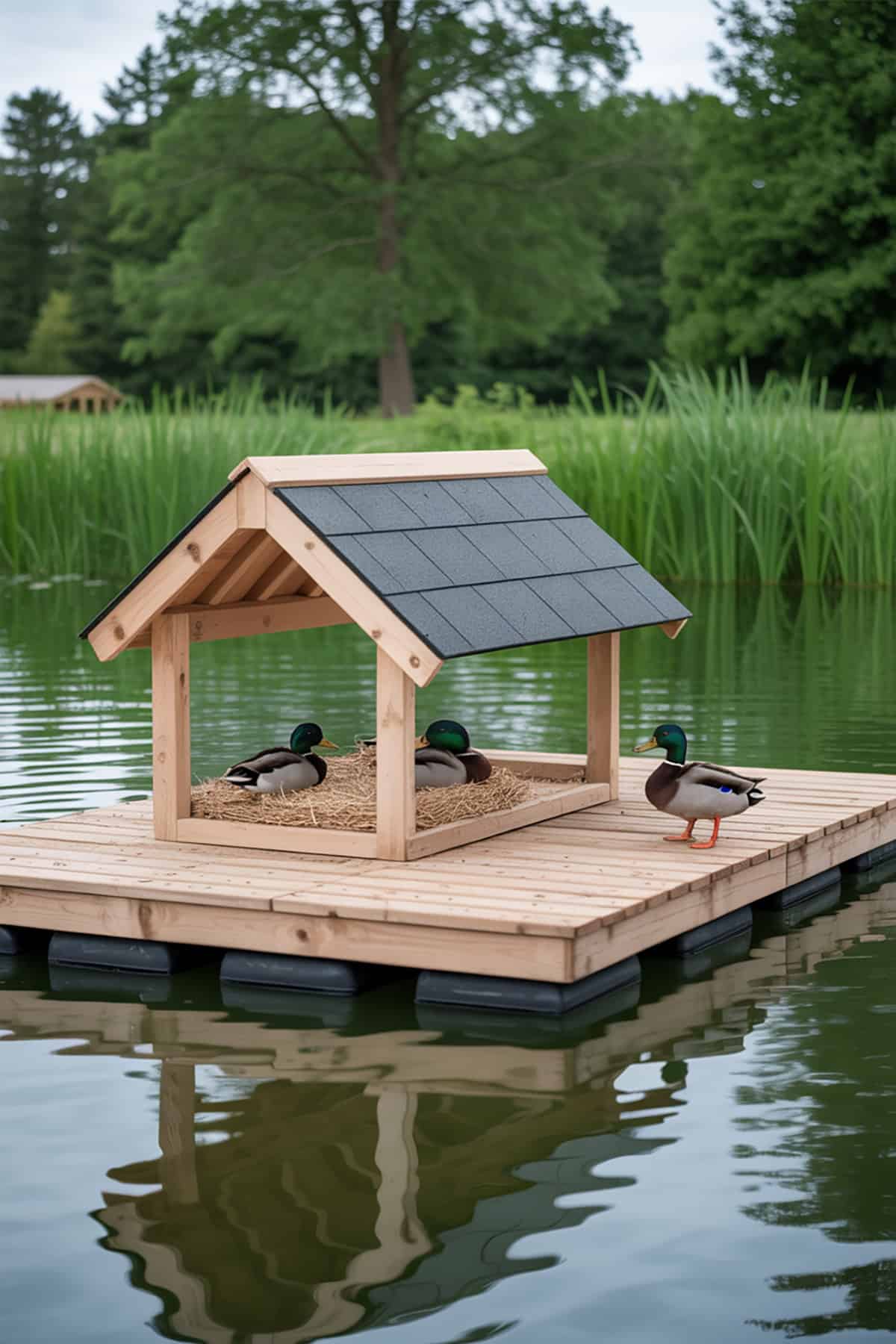
Combine your pond with a floating or raised duck house platform. Keeps ducks dry and safer from predators at night—they can swim right up to their home.
Build the platform from sturdy wood or plastic, and anchor it well. Add a gentle ramp and comfy bedding inside. Good ventilation and shade matter for happy ducks.
Kid-Friendly Duck Pond with Fence
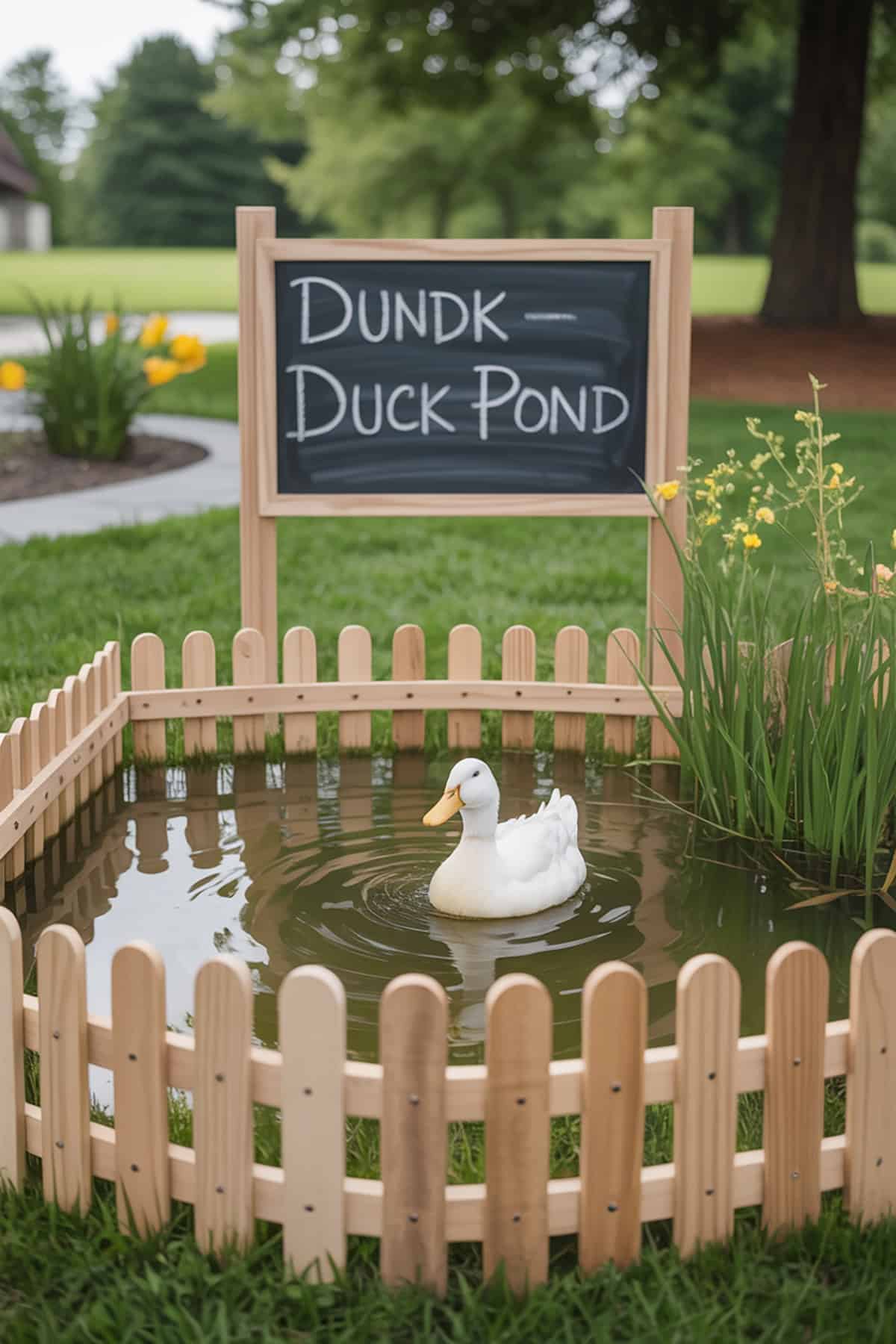
Kid-safe duck ponds need solid fencing to prevent accidents. Fencing separates kids and ducks when needed. Wire mesh or picket fence, at least three feet high, works well.
Gates with childproof locks let adults in but keep little ones out. Viewing windows and pathways in the fence make it fun for kids. A splash of color on the fence doesn’t hurt, either.
Modern Geometric Pond Design
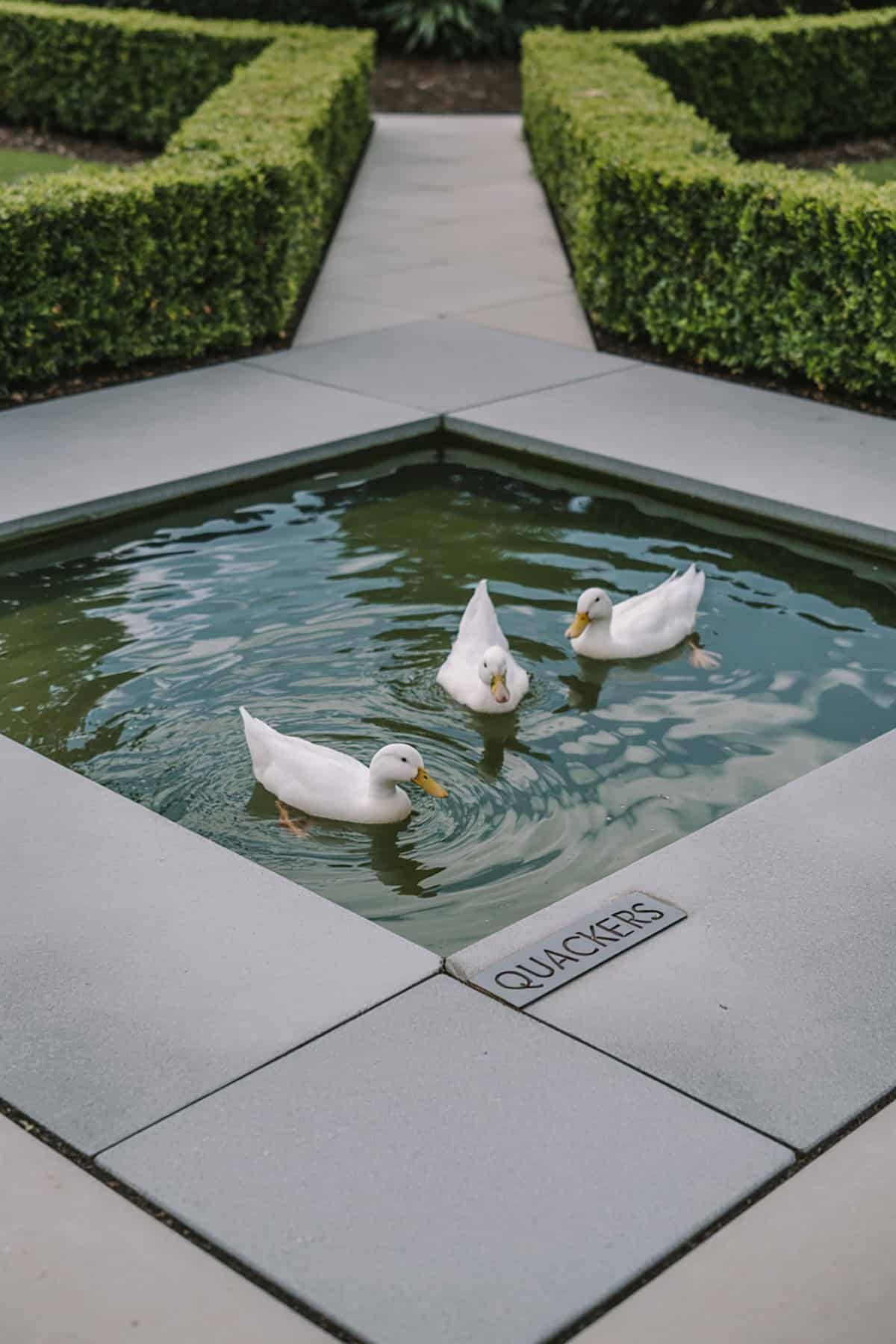
Modern duck ponds go for clean lines and bold shapes—think squares or rectangles. Concrete blocks or steel edging help keep those lines crisp. Stick to a simple color palette for a sharp look.
Add a minimalist wooden deck or bench, maybe with stainless steel rails. Not too many plants; clear water fits the style. Modern ponds work well in city yards or updated landscapes.
Duck Pond with Solar String Lights
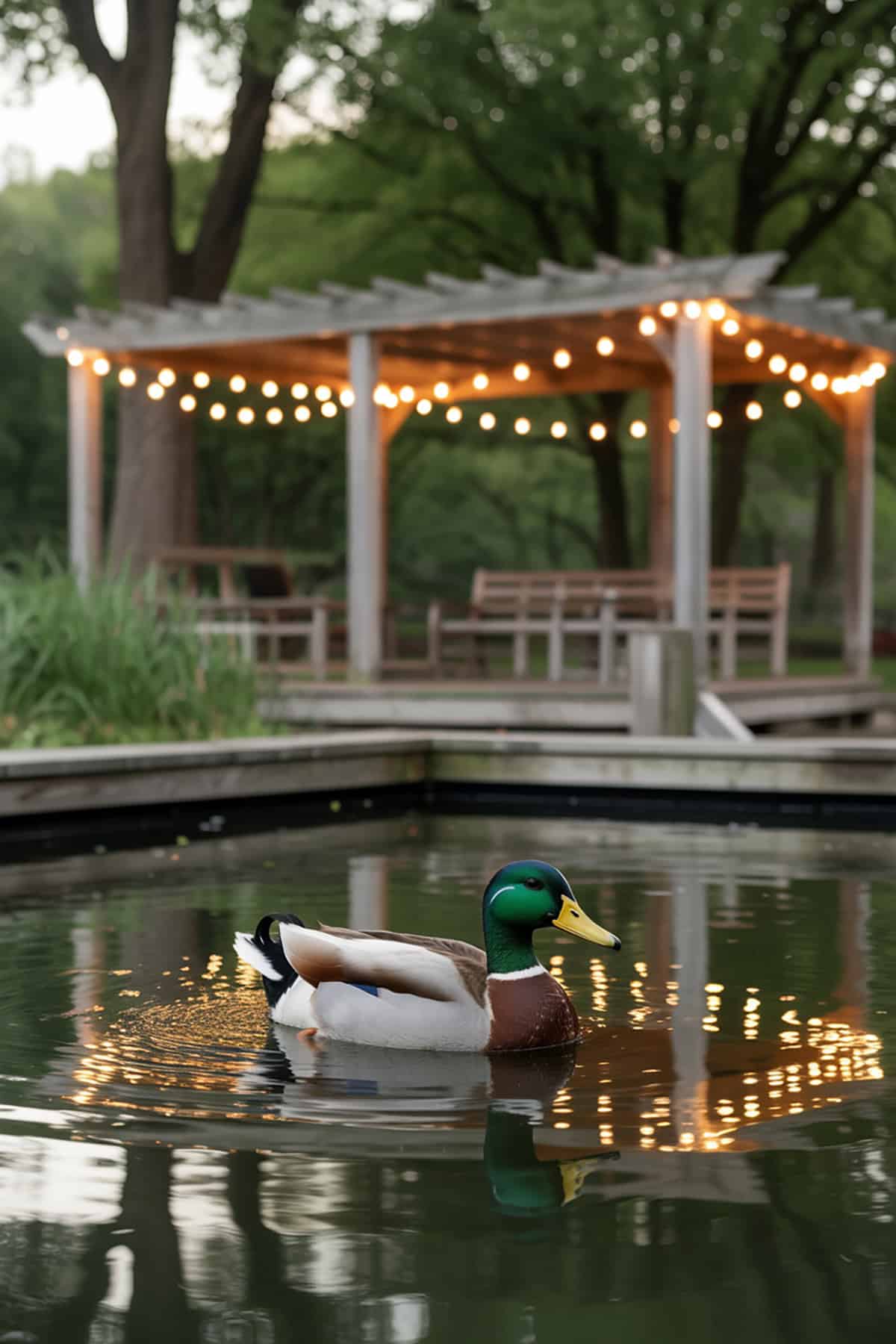
Solar string lights give your duck pond a cozy glow at night. Pick waterproof lights for safety, and hang them on posts, trees, or pergola edges.
Solar panels keep things simple—no wires. Aim the lights to highlight the water and paths. Ducks aren’t bothered by soft lighting, and you get to enjoy the pond after dark.
Rustic Rock Wall Pond
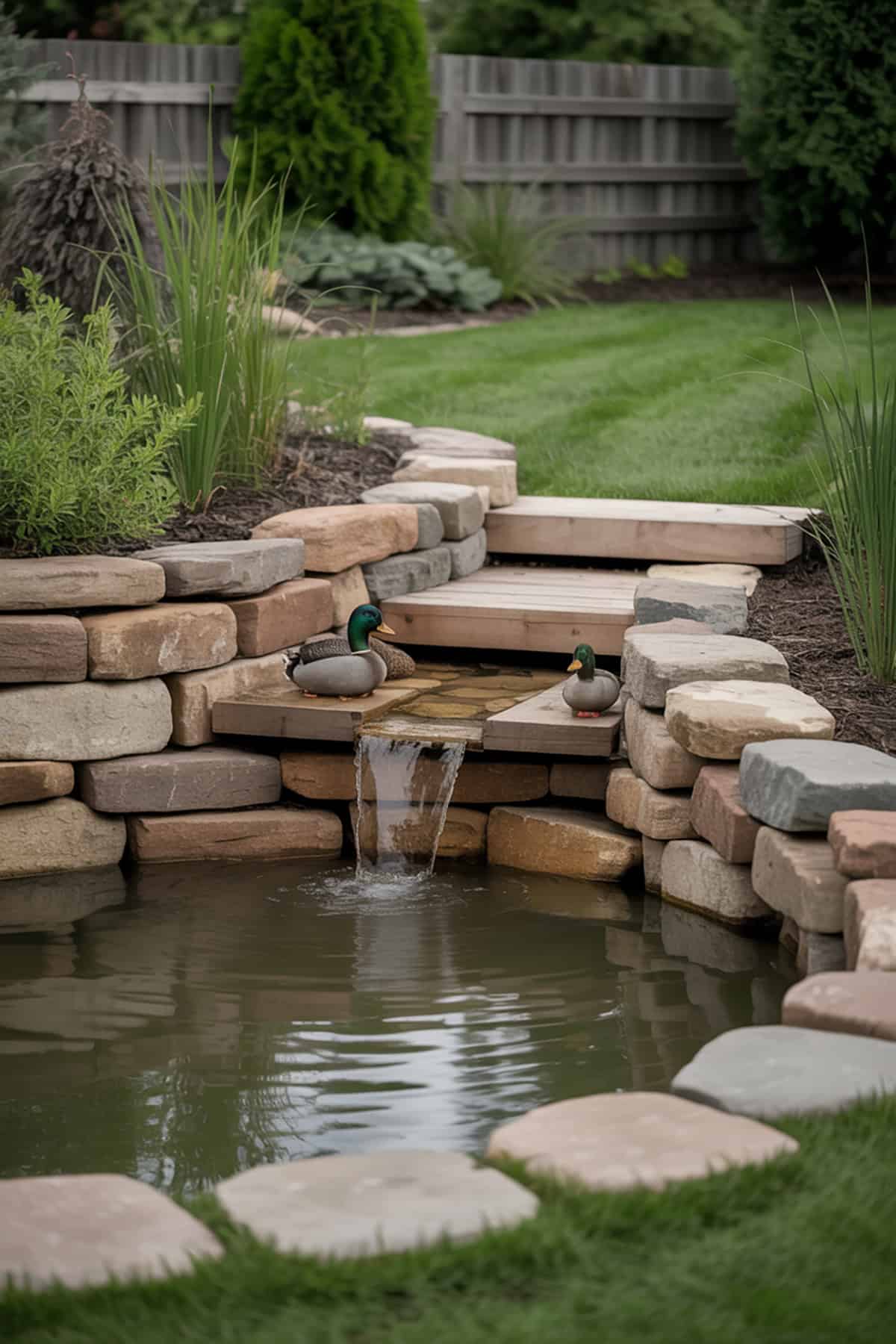
Rustic ponds use rough, stacked rock walls for borders. Big, uneven stones make for a sturdy edge. Fill in gaps with gravel and moss for character.
Rock walls blend right into natural gardens. The texture gives plants and insects places to live. Ducks use the wide tops to rest or climb out. This style is tough and doesn’t need much upkeep.
Reflective Pond with Minimal Plants
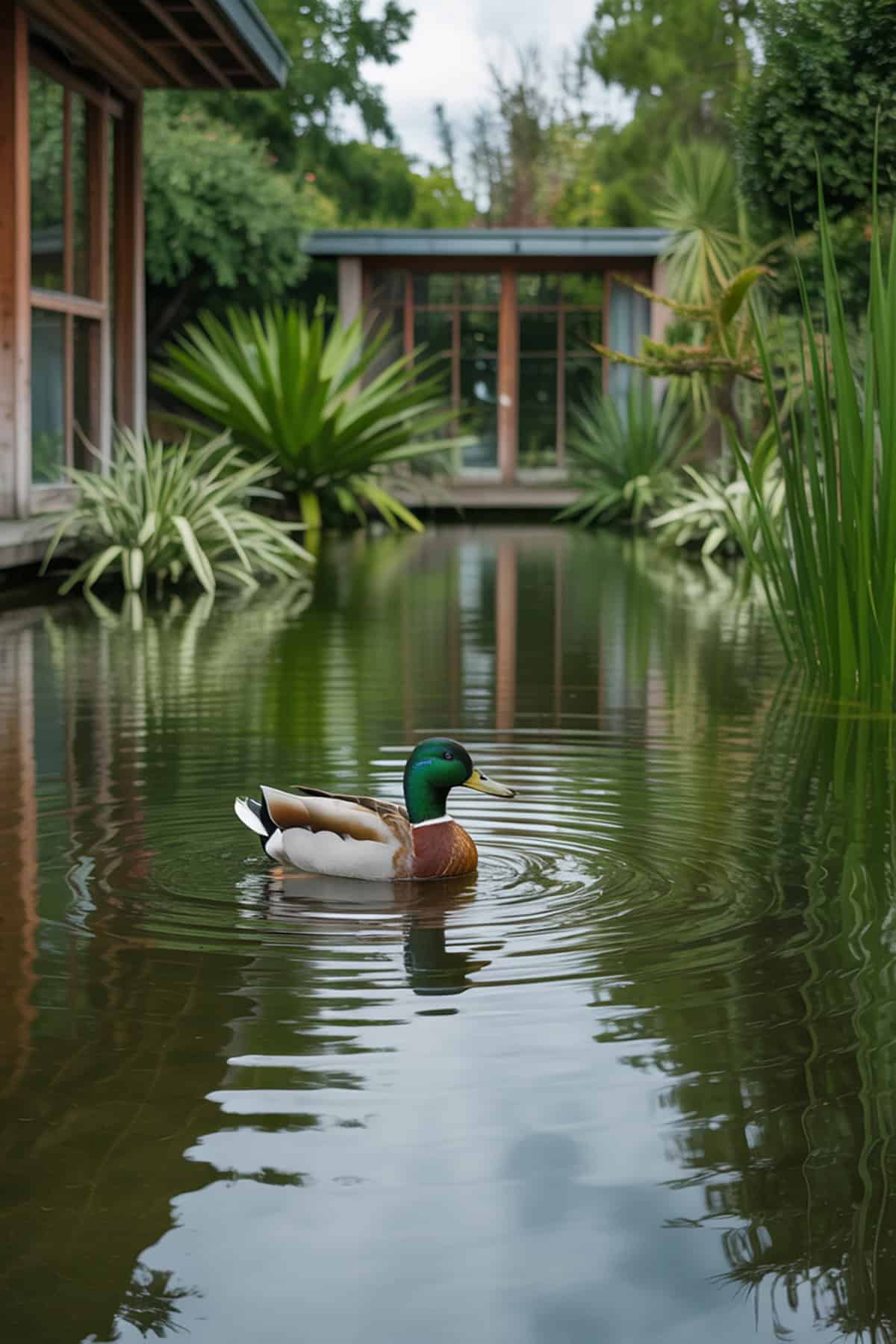
A reflective duck pond is all about that glassy surface. Put it in an open spot to catch the sky or trees. Dark liners or stones help deepen the reflections.
Keep most plants to the edges—just a few lilies or grasses. Skim leaves and debris off often. Ducks like the open water, and you get a mirror-like view.
Duck Pond with Flowering Marginal Plants

Flowering marginal plants boost pond health and bring in pollinators. Go for species that like shallow water, like iris, pickerelweed, or marsh marigold.
Plant them in baskets or straight into the mud at the edge. They help filter water, provide shade, and give ducks places to find bugs. Flowers add color through spring and summer, too.
Duck Pond with Stream Channel
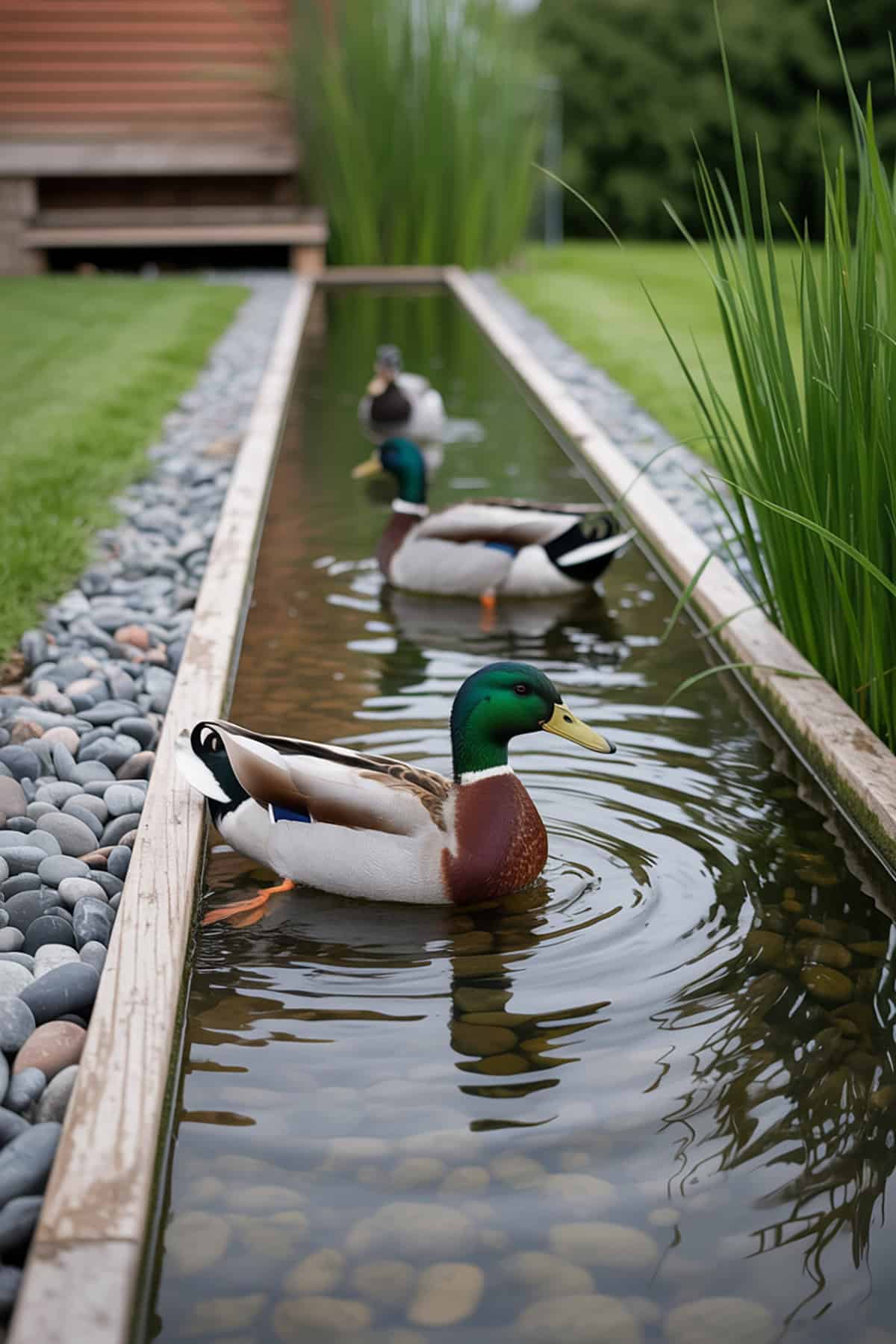
A pond with a stream channel adds movement and extra space for ducks. Use a pond pump to circulate water up the channel and back into the pond. Gravel or river rocks make a safe streambed.
Shallow stream sections are perfect for ducklings to wade and forage. Plant native grasses for stability. Add a few bends and pools to keep things interesting for both you and your ducks.
Natural Muddy Wallow Section
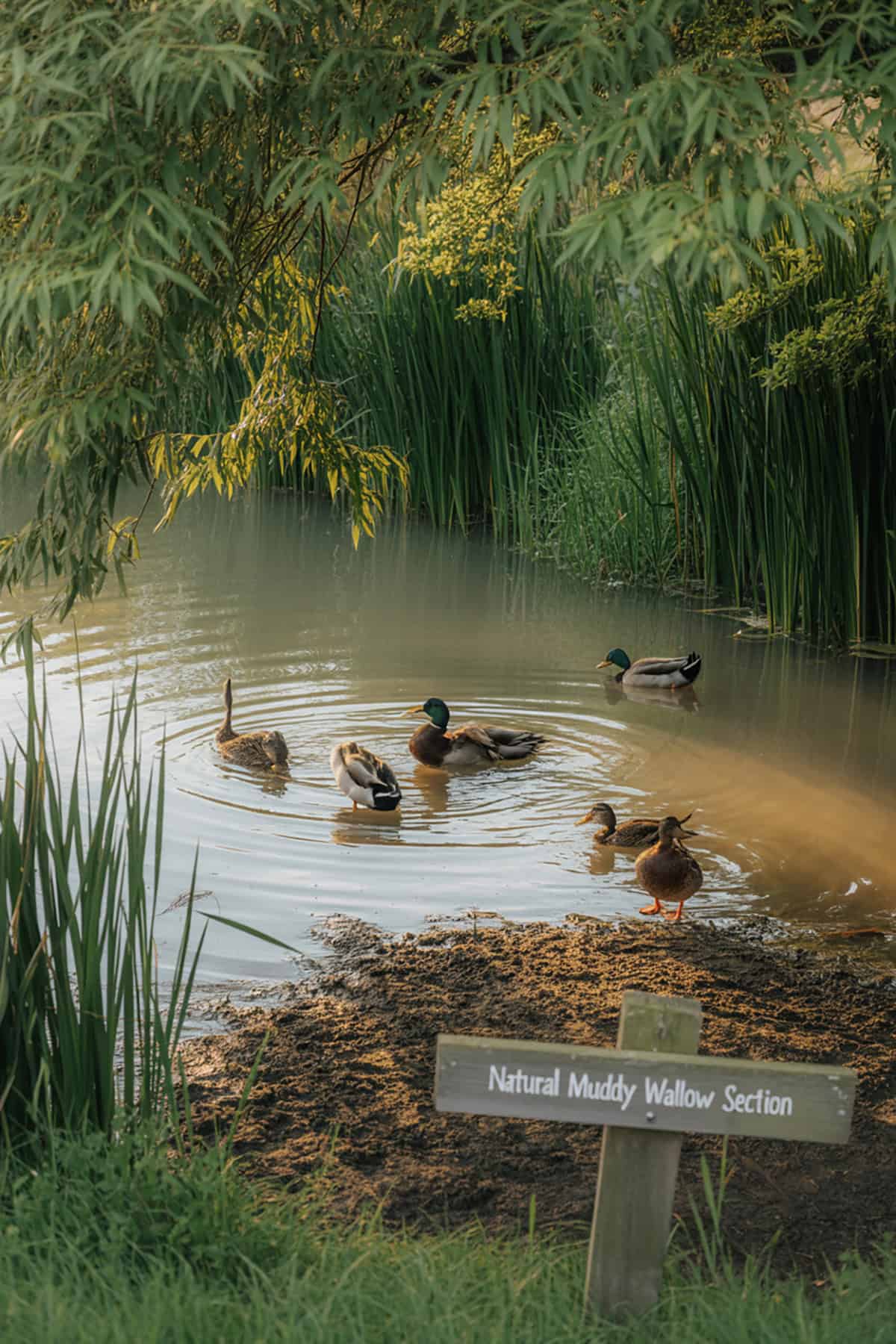
Ducks absolutely love a muddy wallow—it’s where they get to splash, bathe, and preen like they would in the wild. Pick a spot near your main pond and dig out a shallow dip. Toss in some soil and keep it nice and damp, either with a hose or just using overflow from the pond.
Letting ducks wallow like this really helps their feathers stay in good shape. Plus, the mud tends to draw in worms and bugs, which the ducks will happily snack on. Top up the mud when it gets dry. If you can, keep the wallow a few feet away from deeper water—otherwise, things might get a little too messy for comfort.
Multi-Level Pond with Waterfall Drop
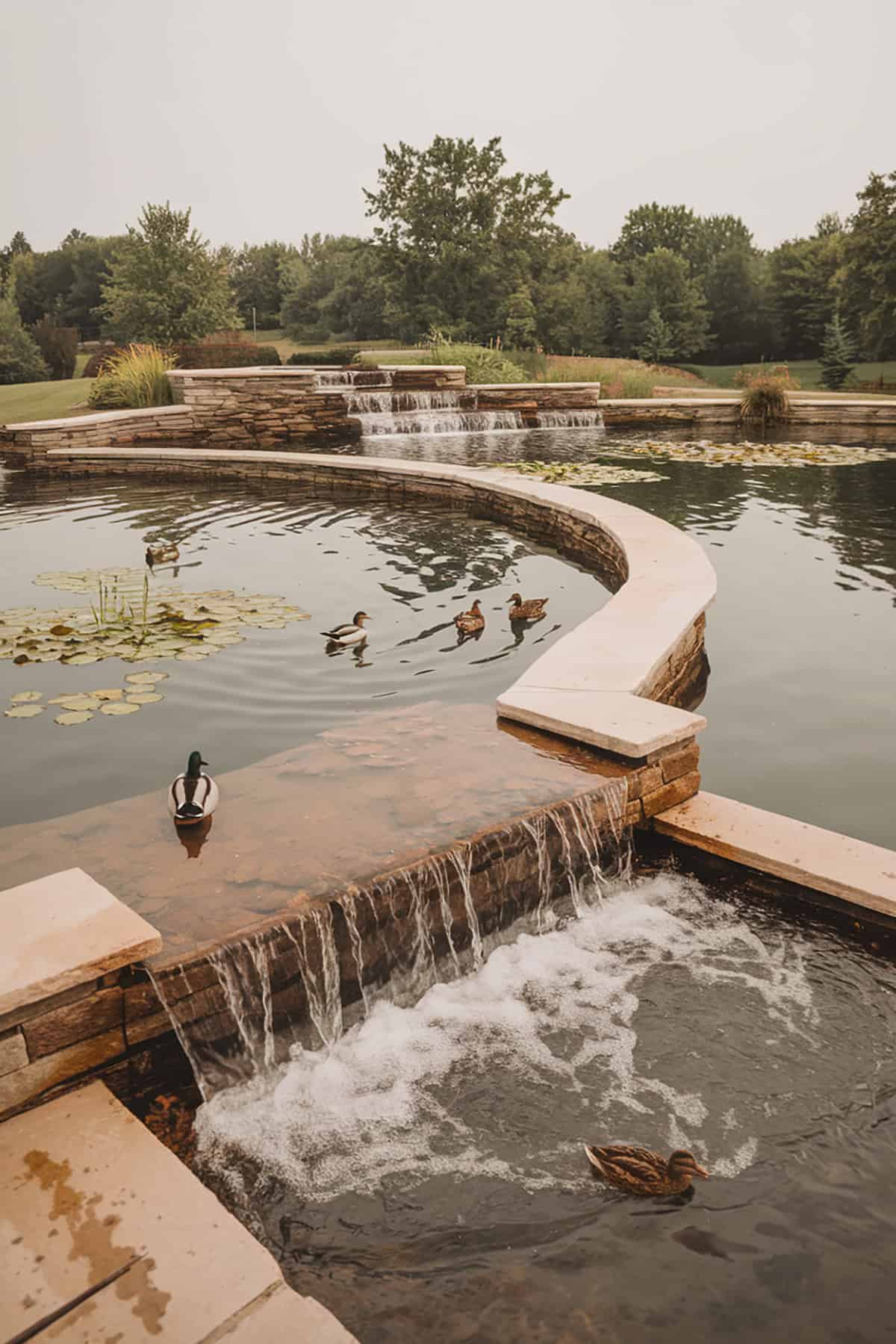
Multi-level duck ponds really liven up a yard, adding depth and keeping the water moving thanks to a waterfall drop. You’ll need at least two basins set at different heights, then link them up with a liner or maybe a rock spillway—whatever fits your style.
With a pump pushing water from the top pond down to the lower one, you don’t have to worry about things getting stagnant. Ducks seem to love the movement, and honestly, the sound of the water trickling down is pretty relaxing. Toss in some perching rocks or a few plants at each level for extra interest. Why not make it a little wild?
